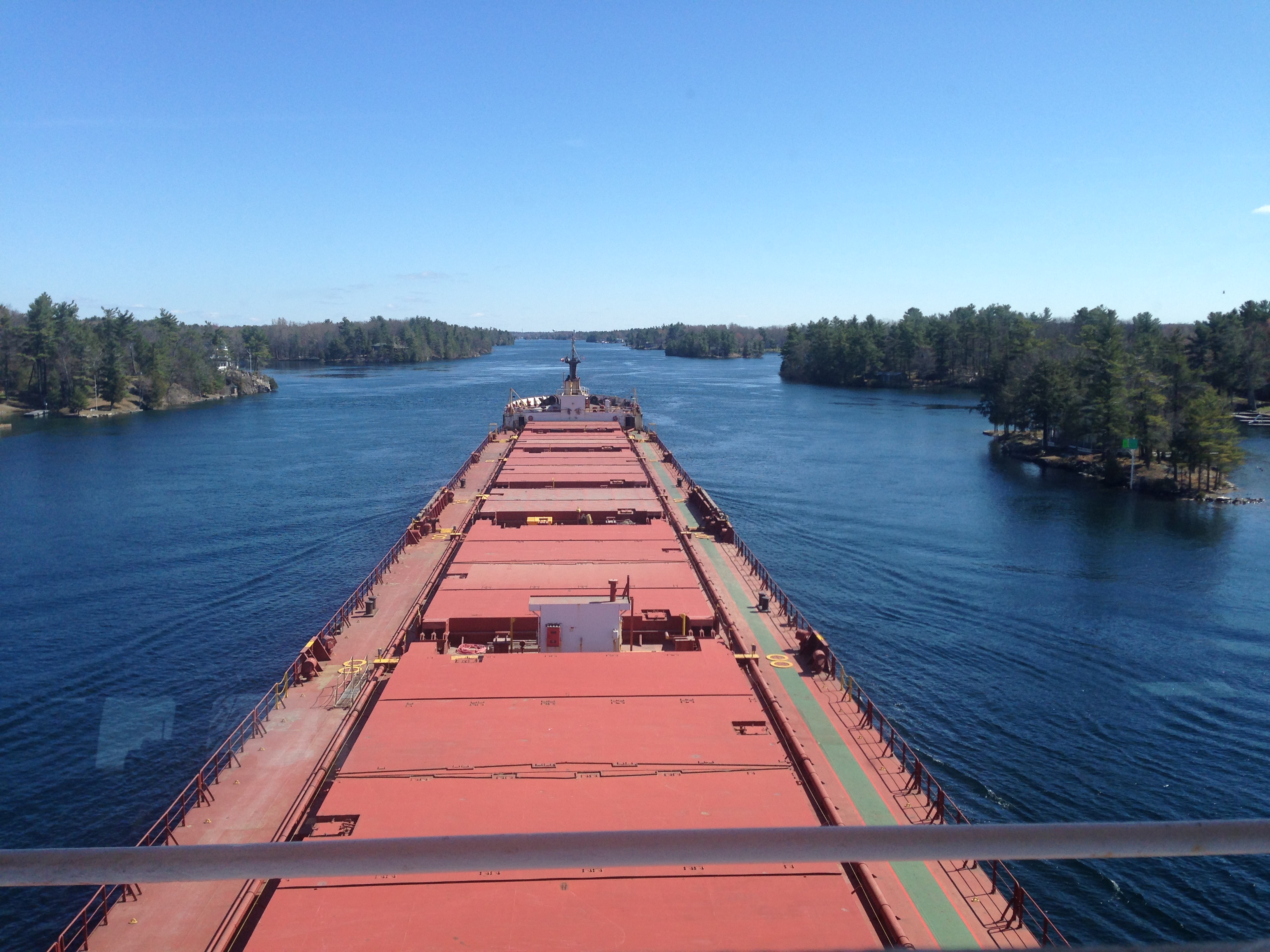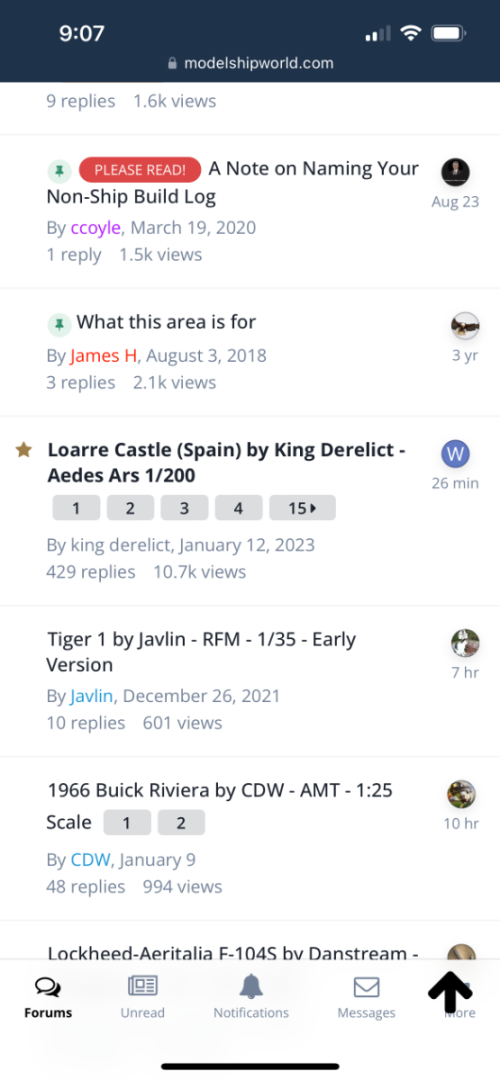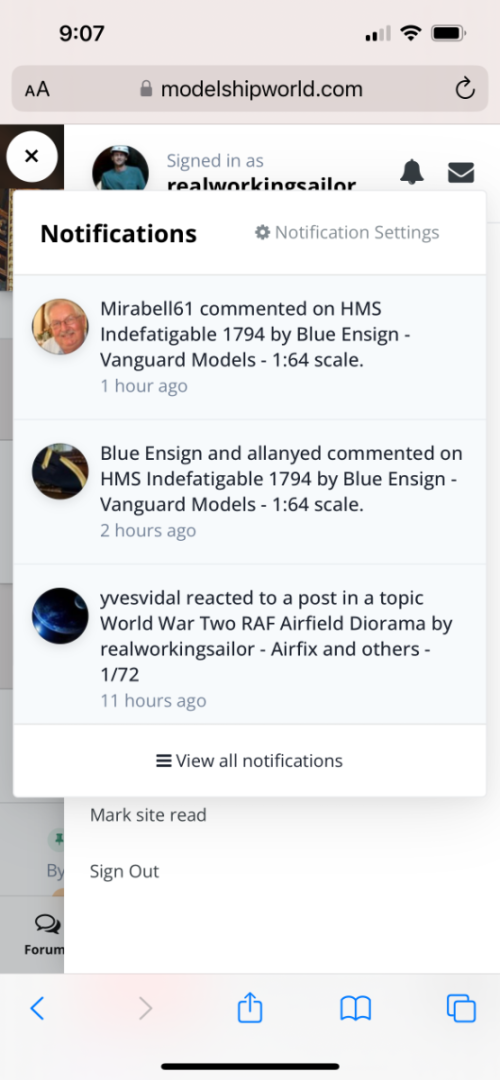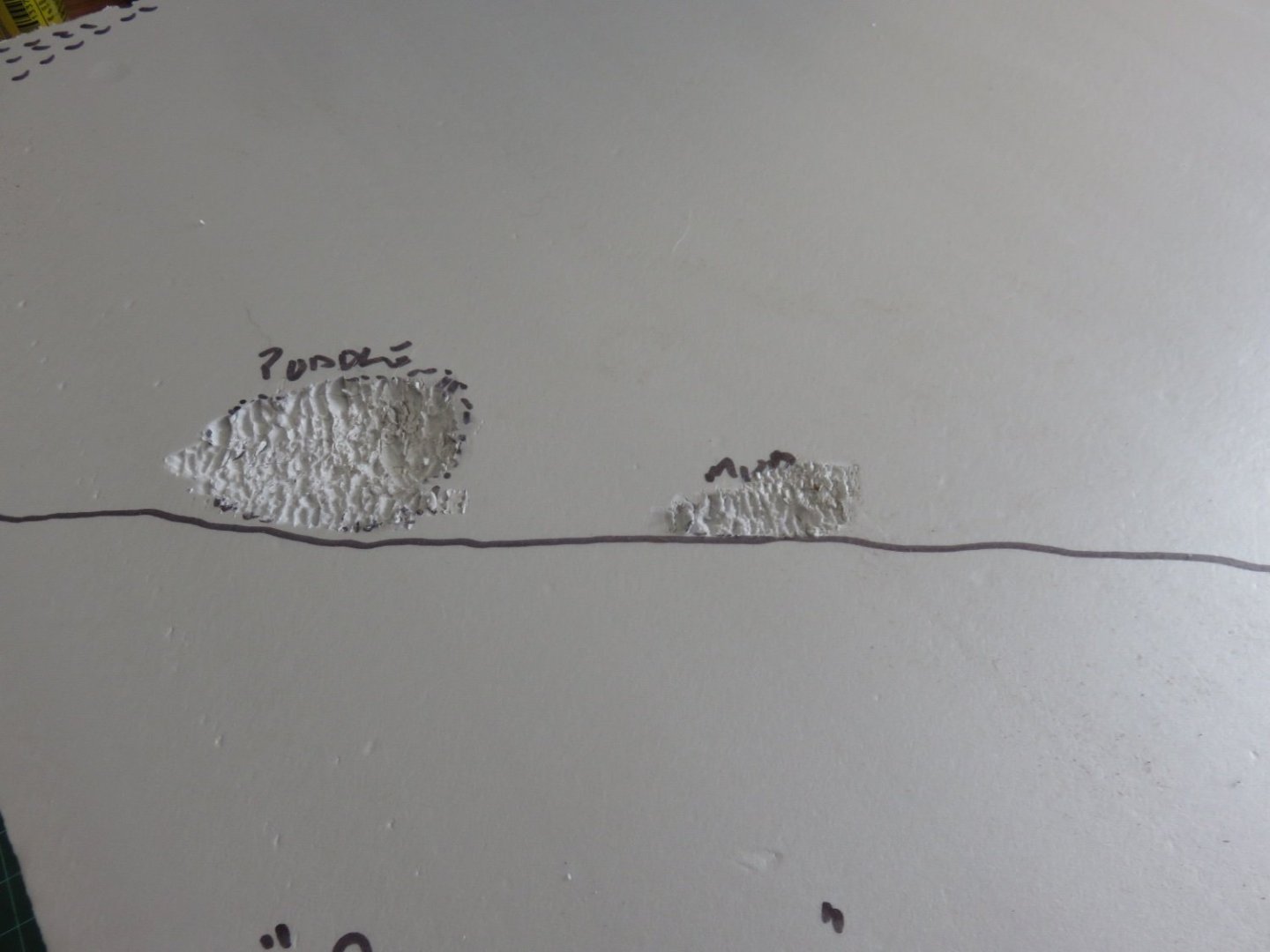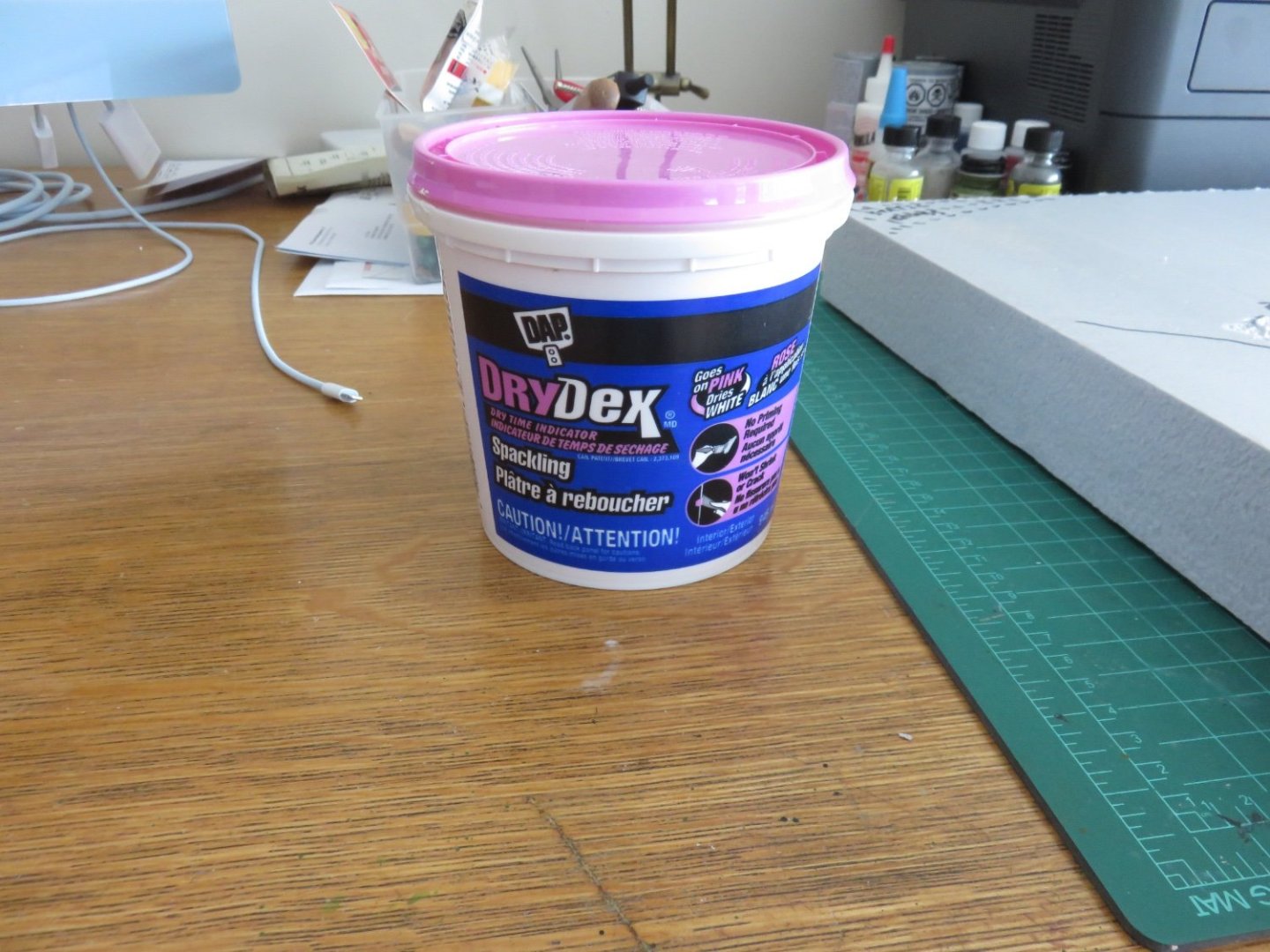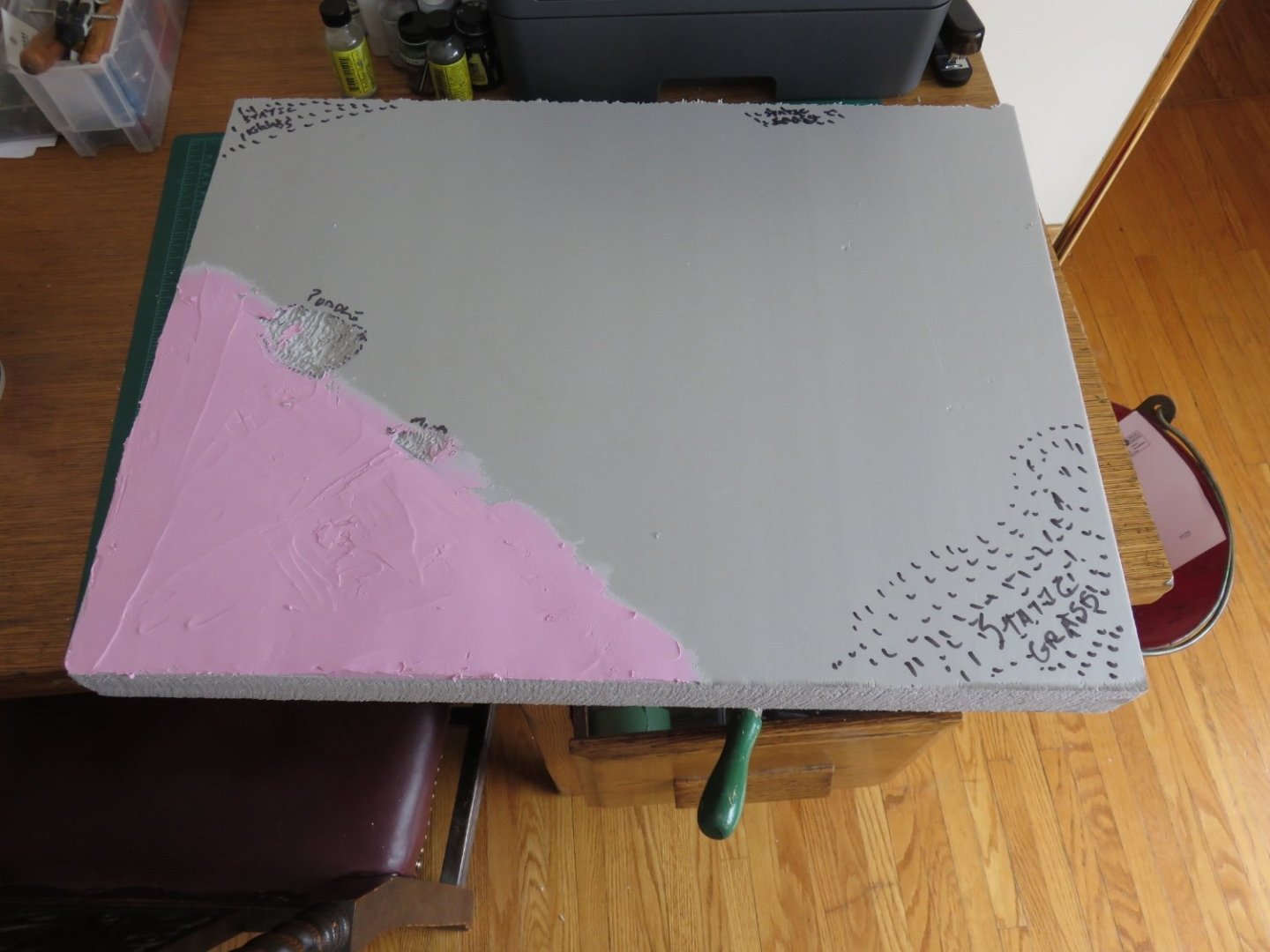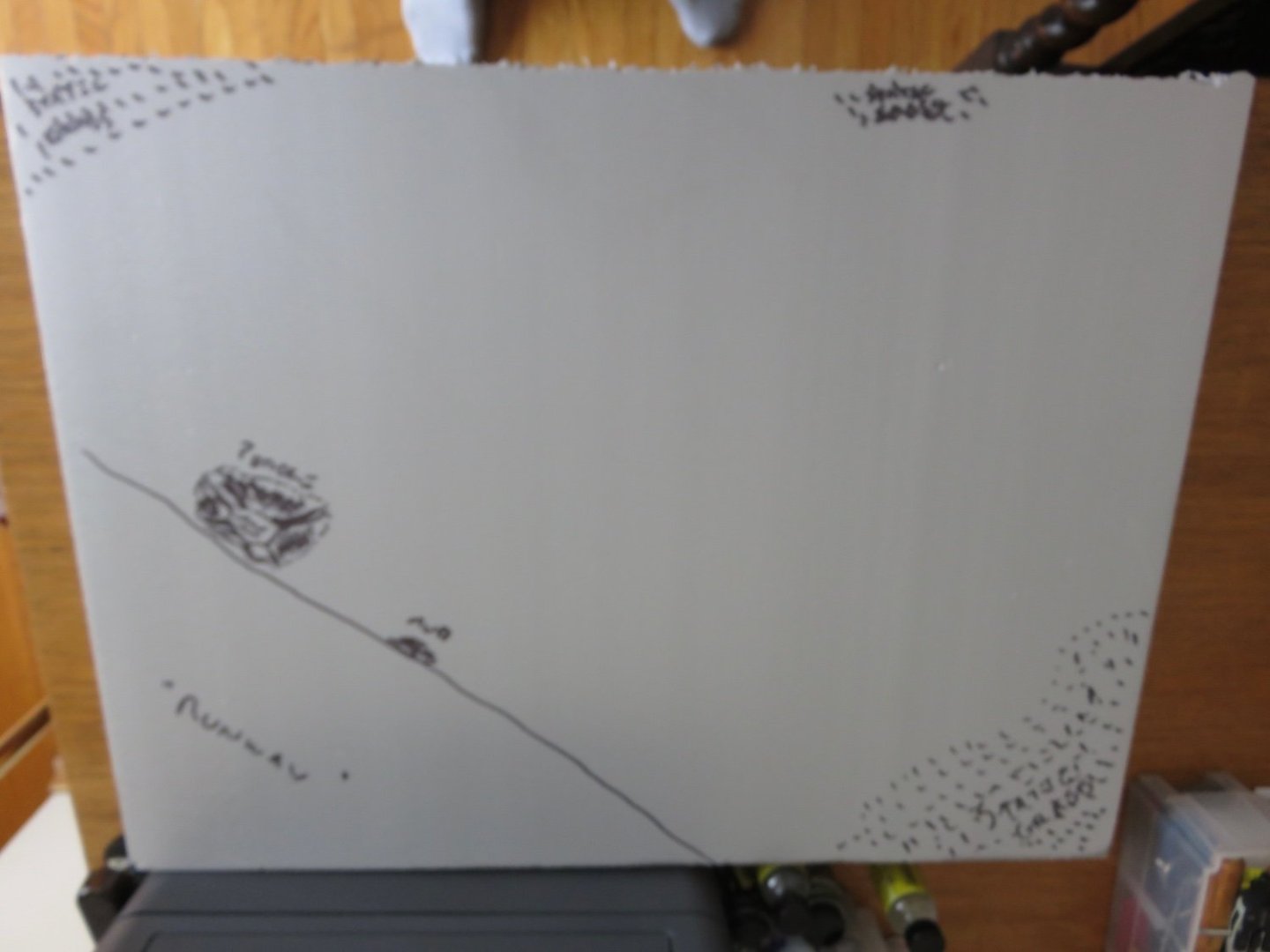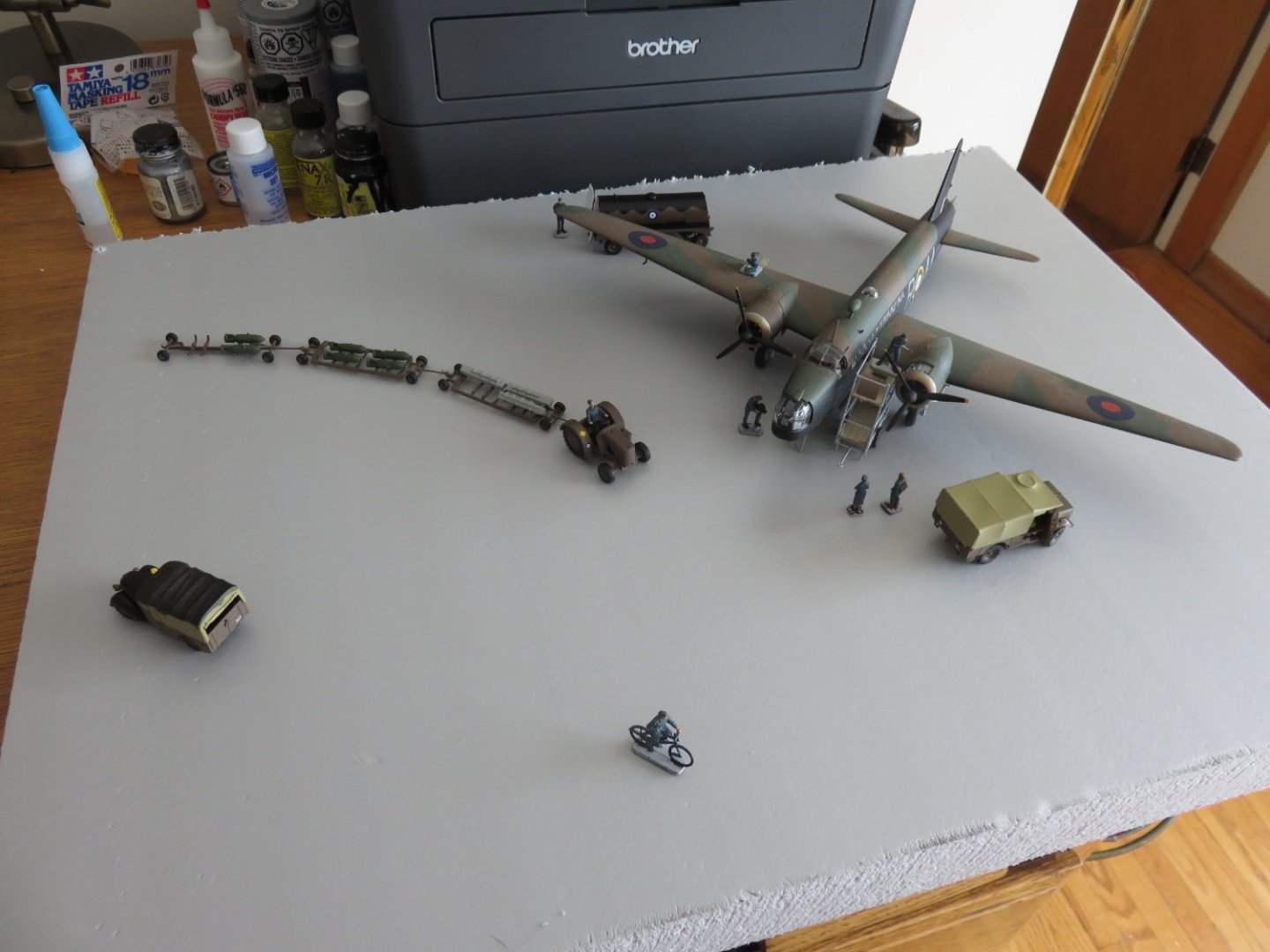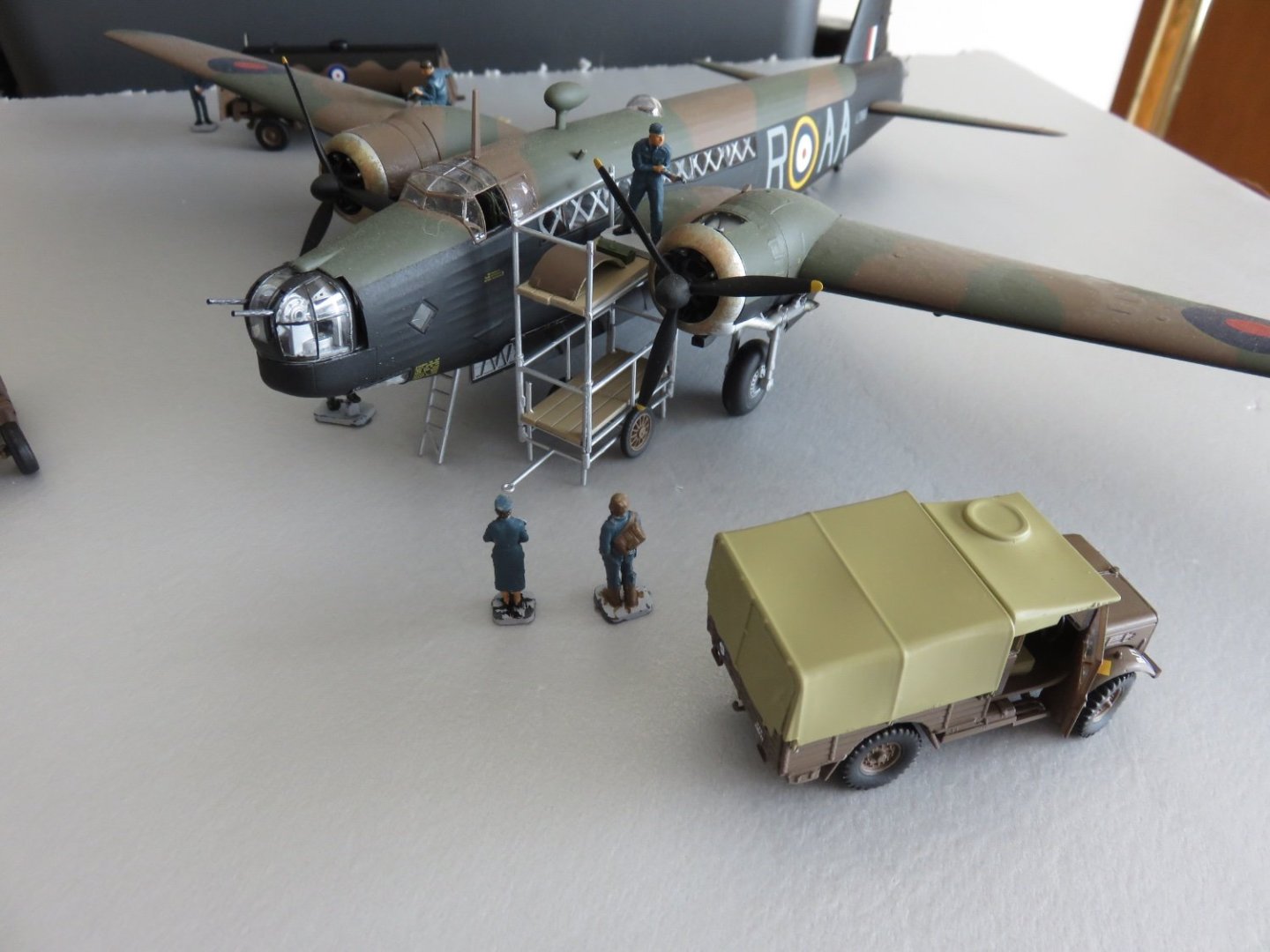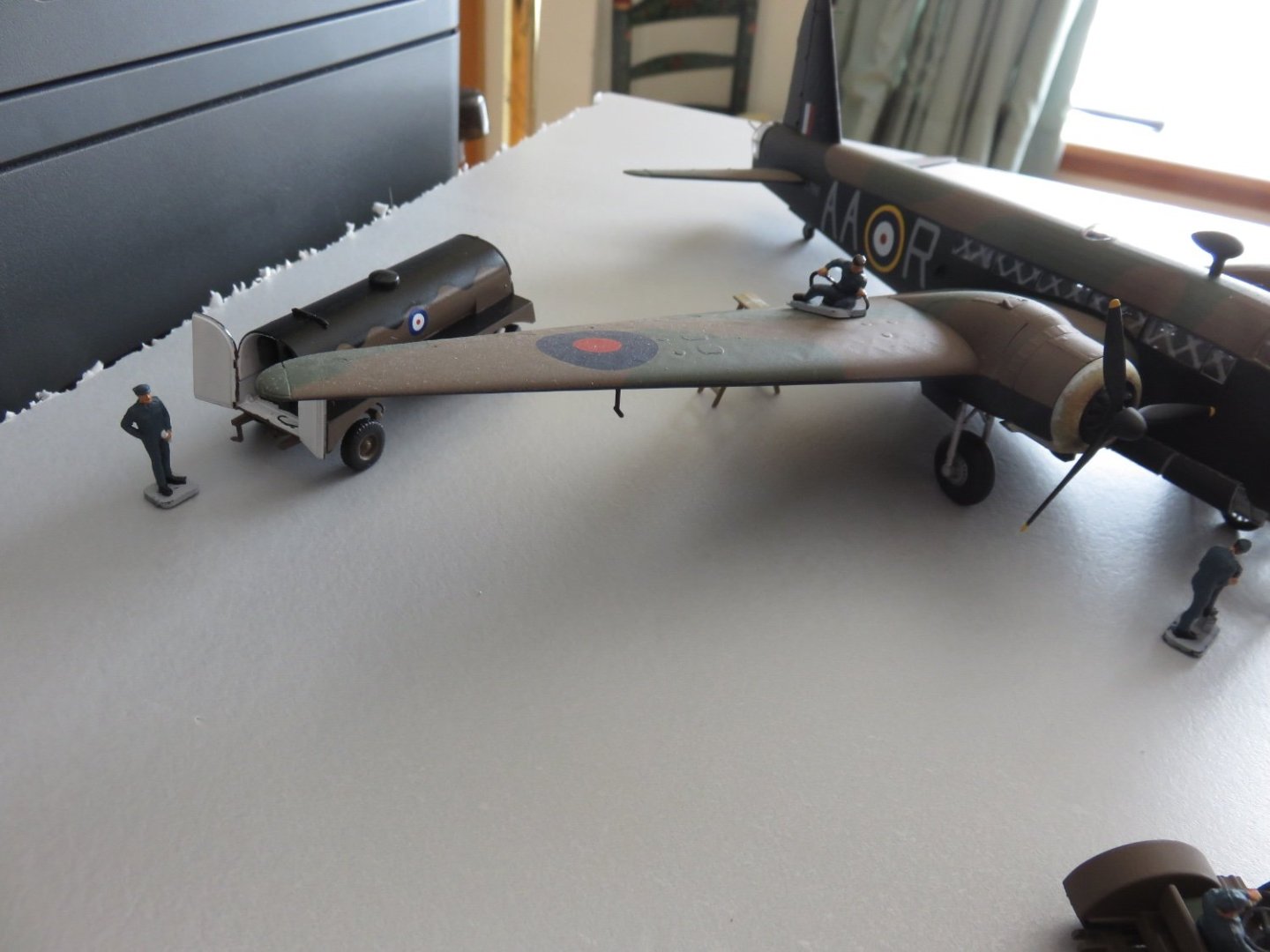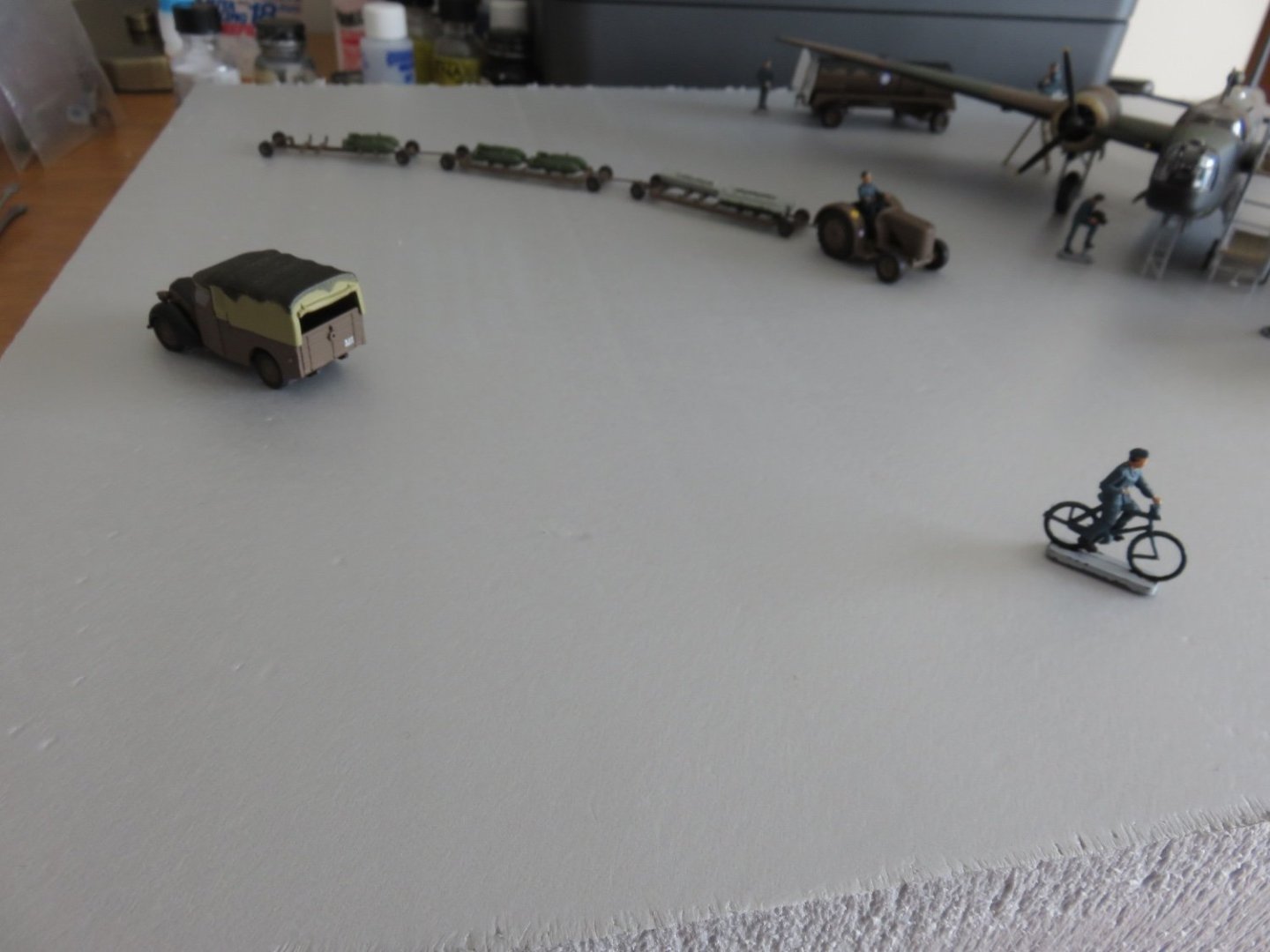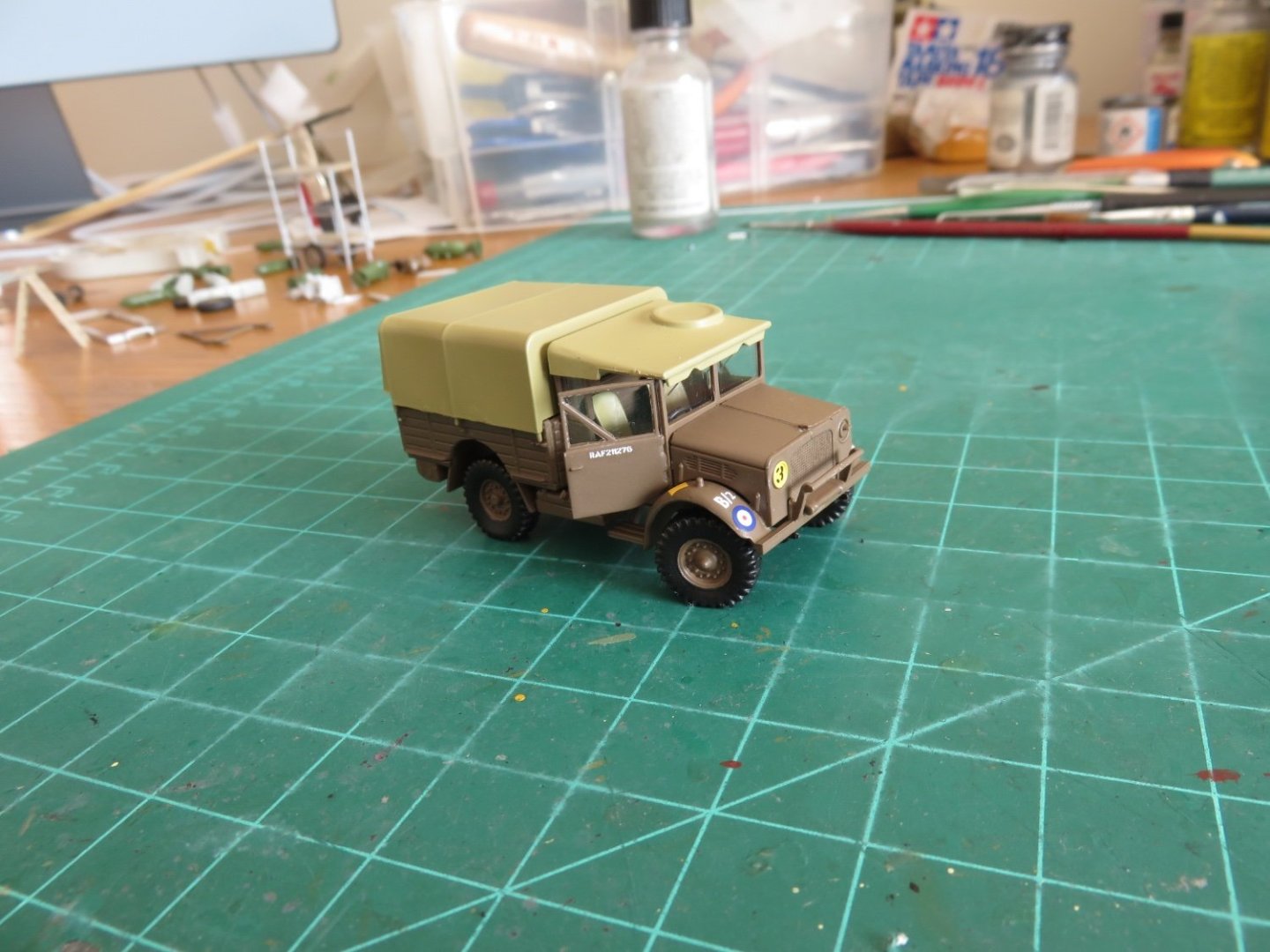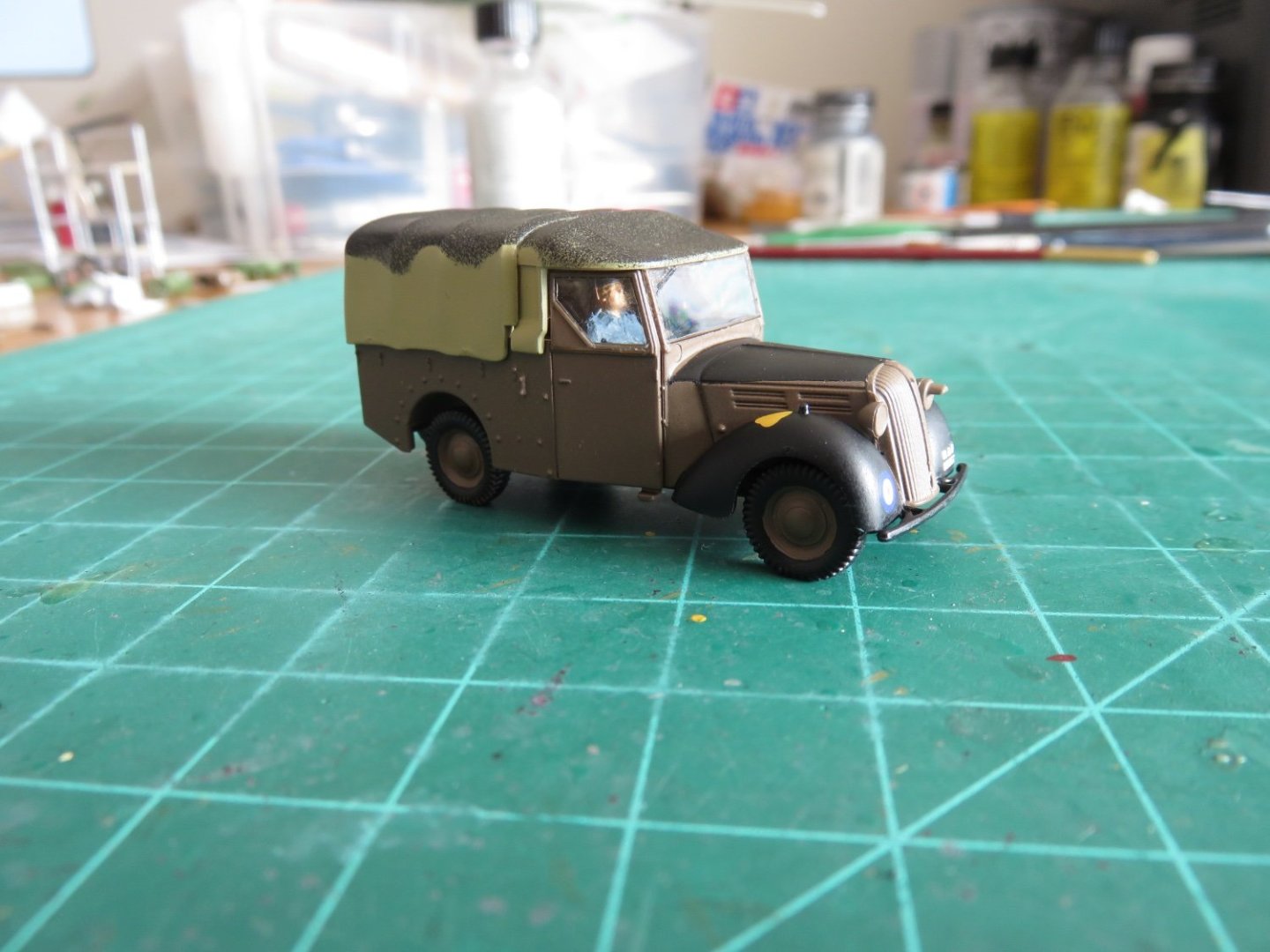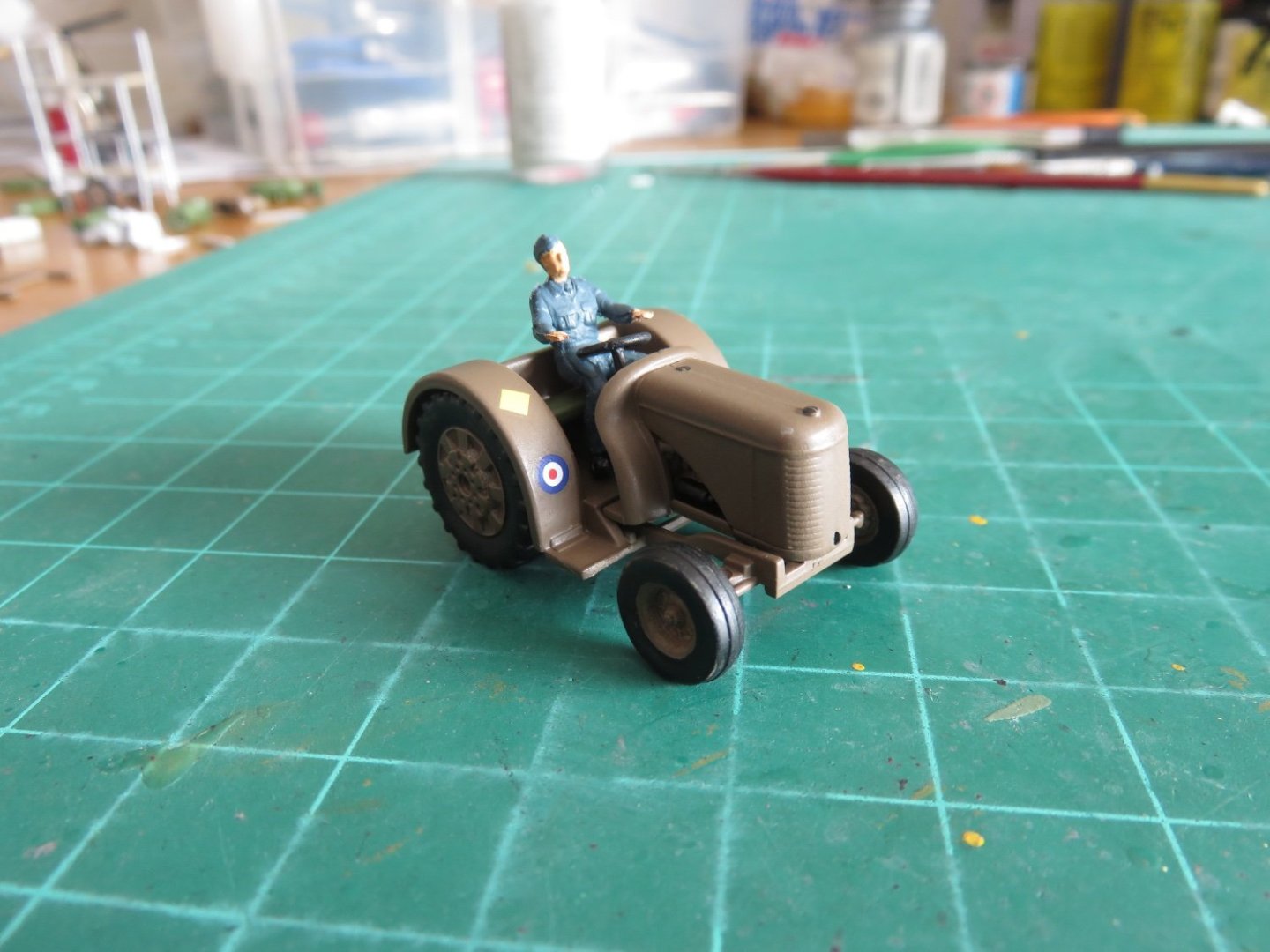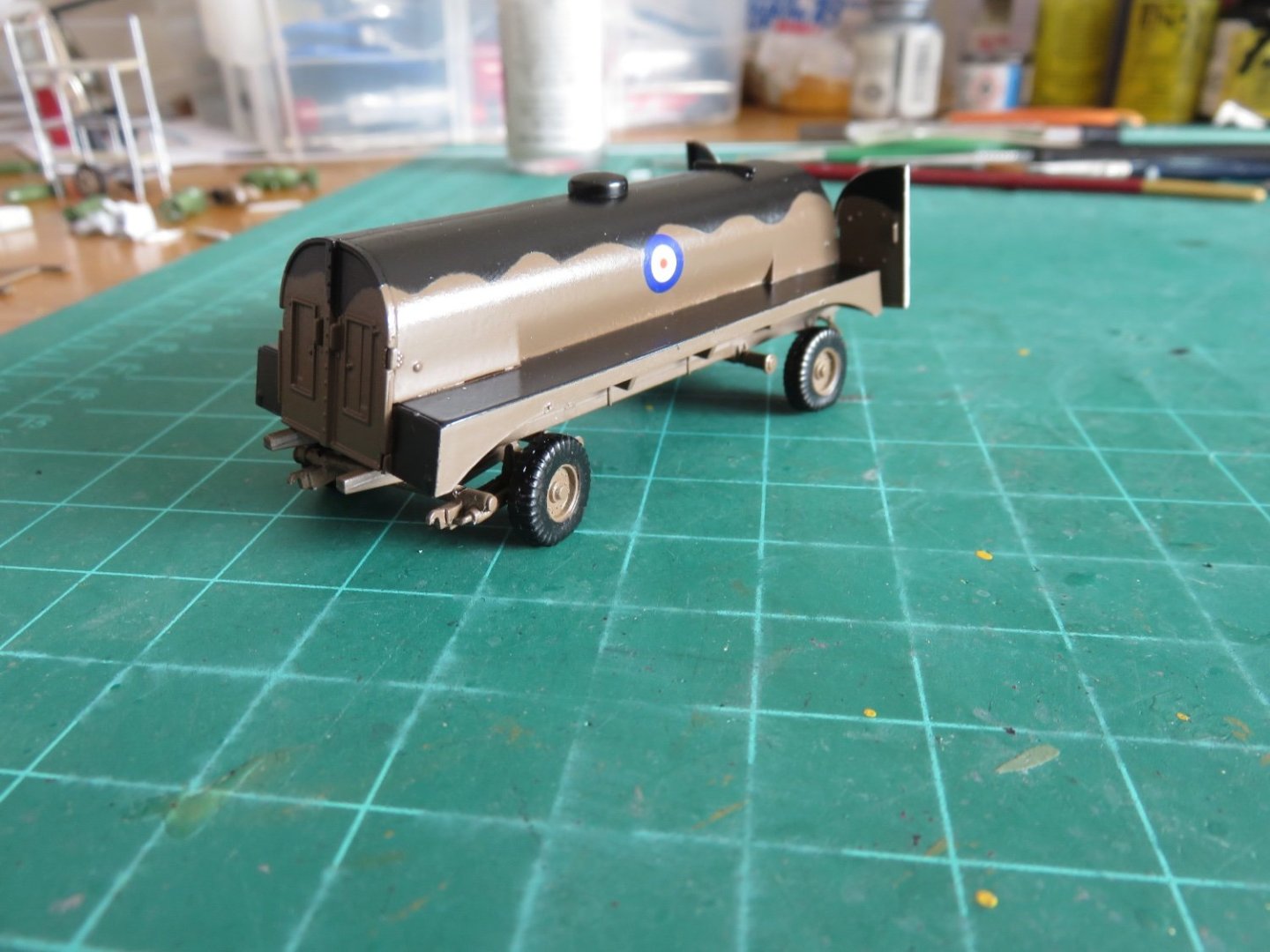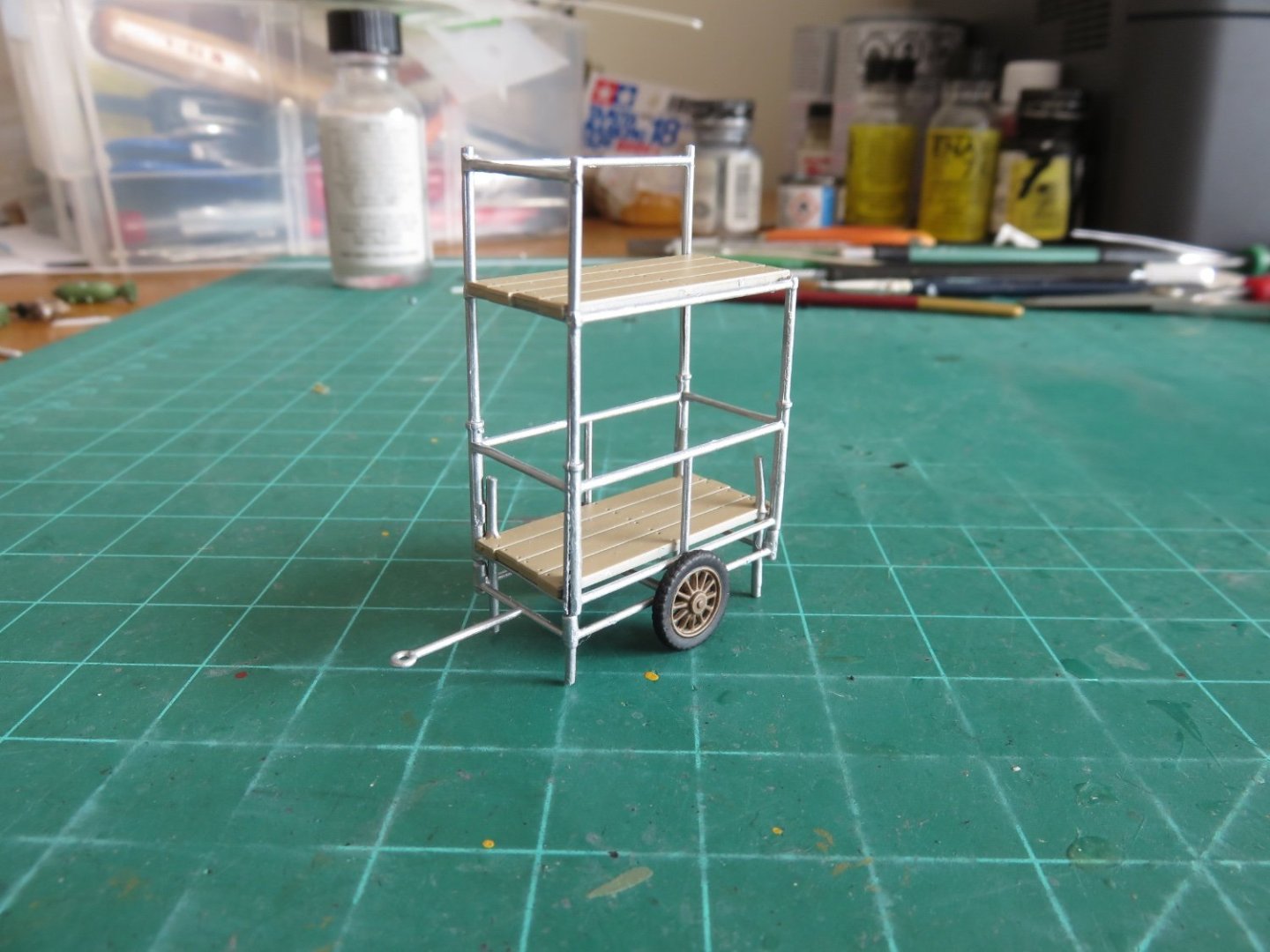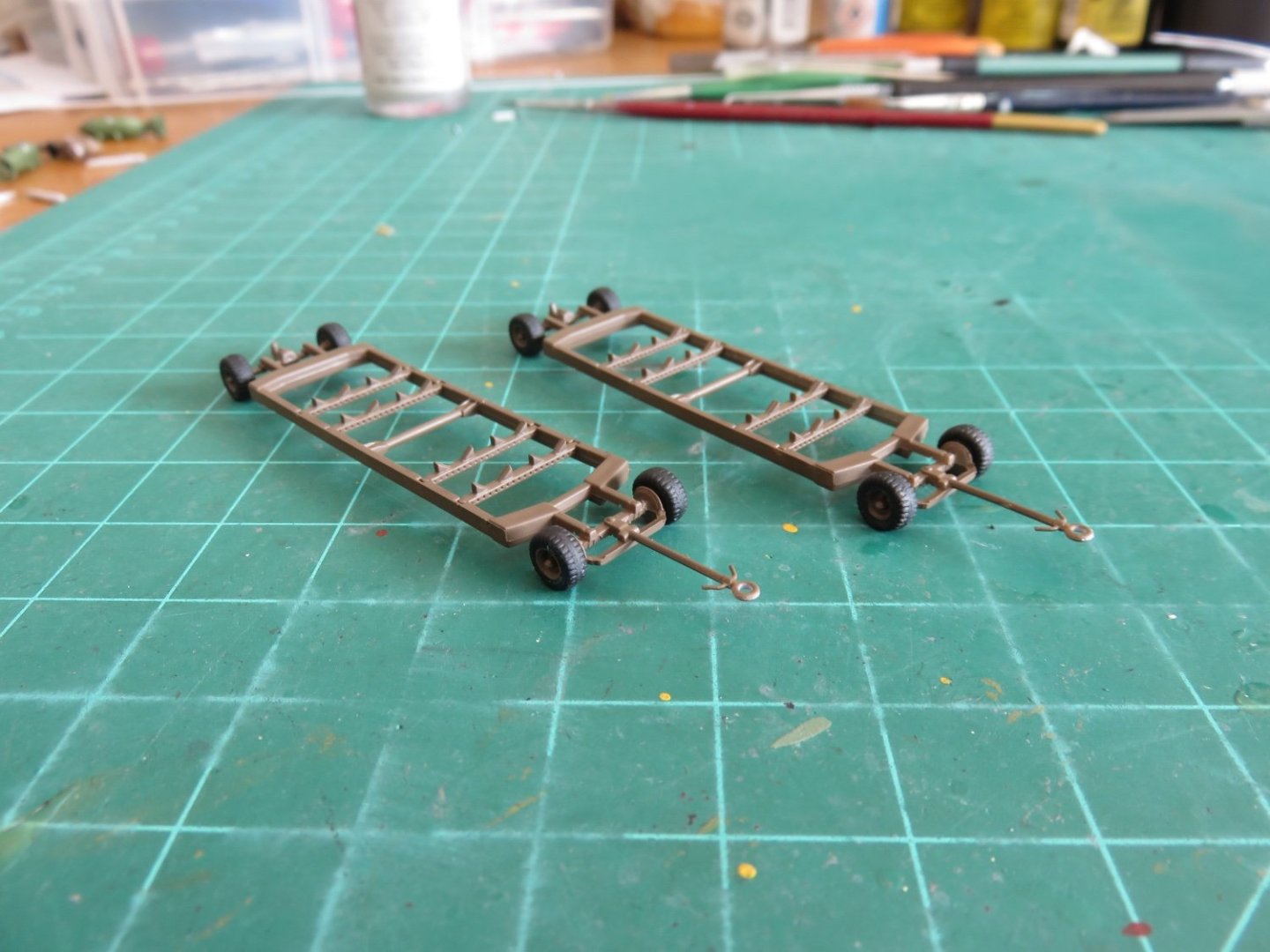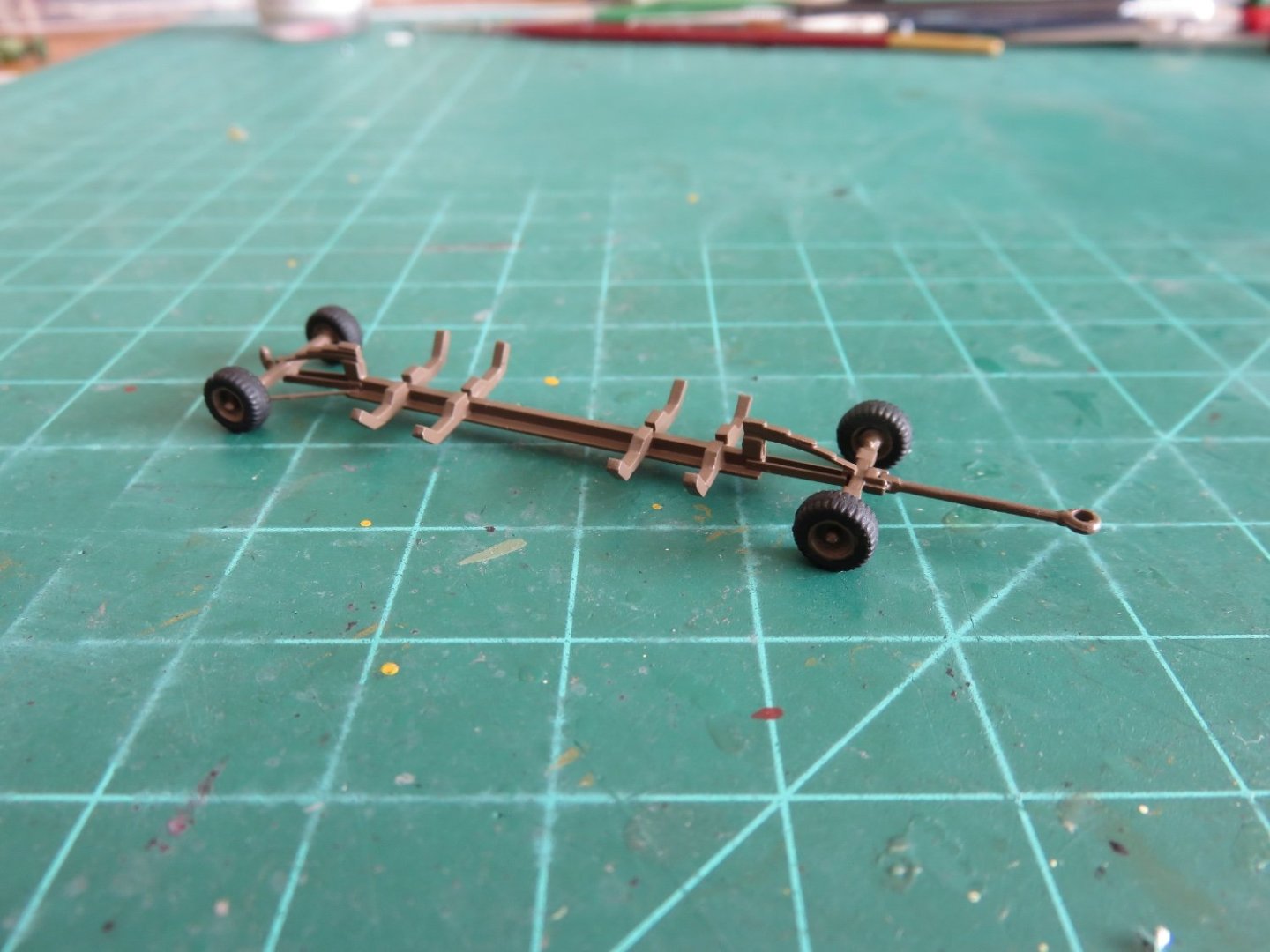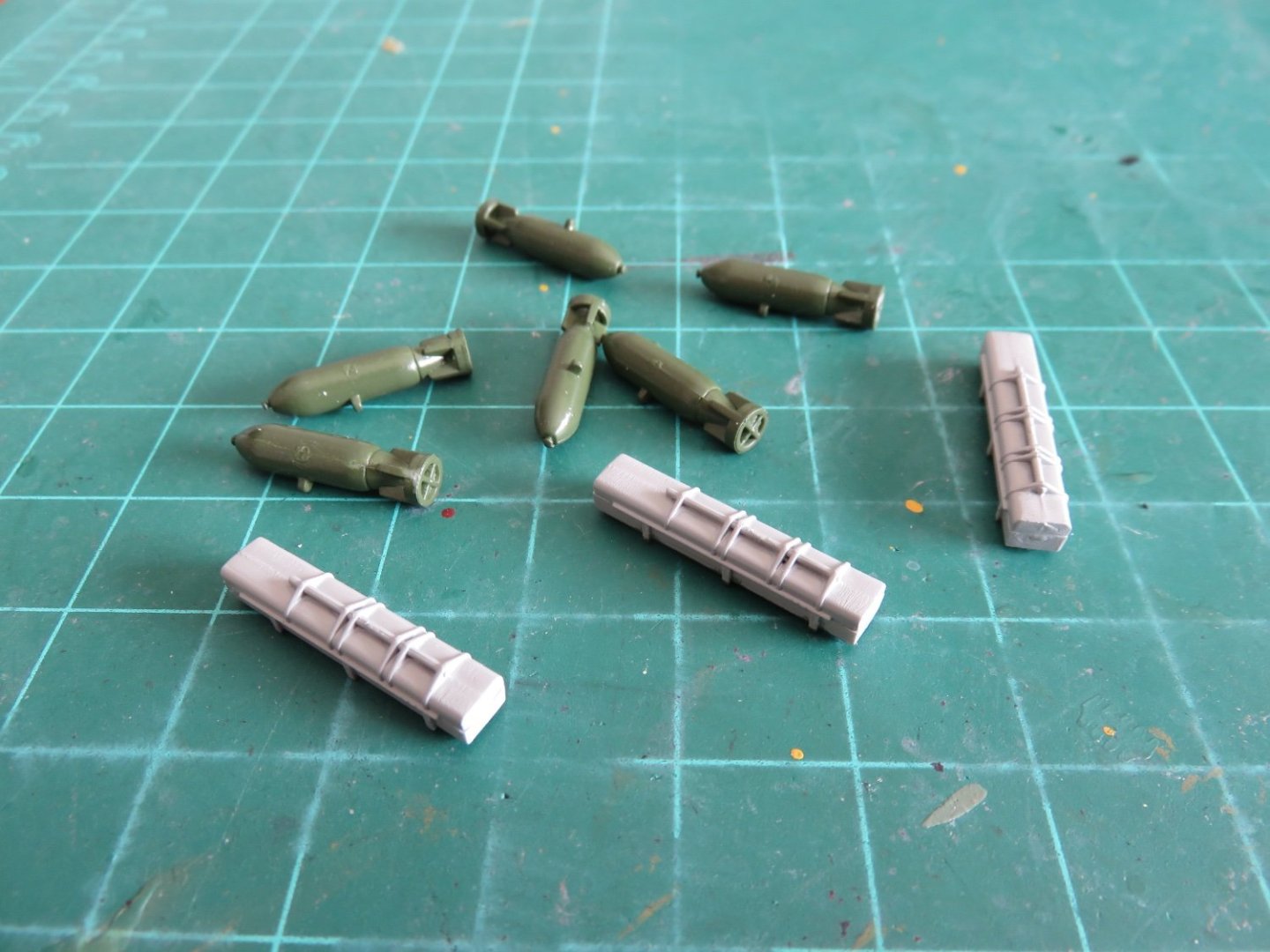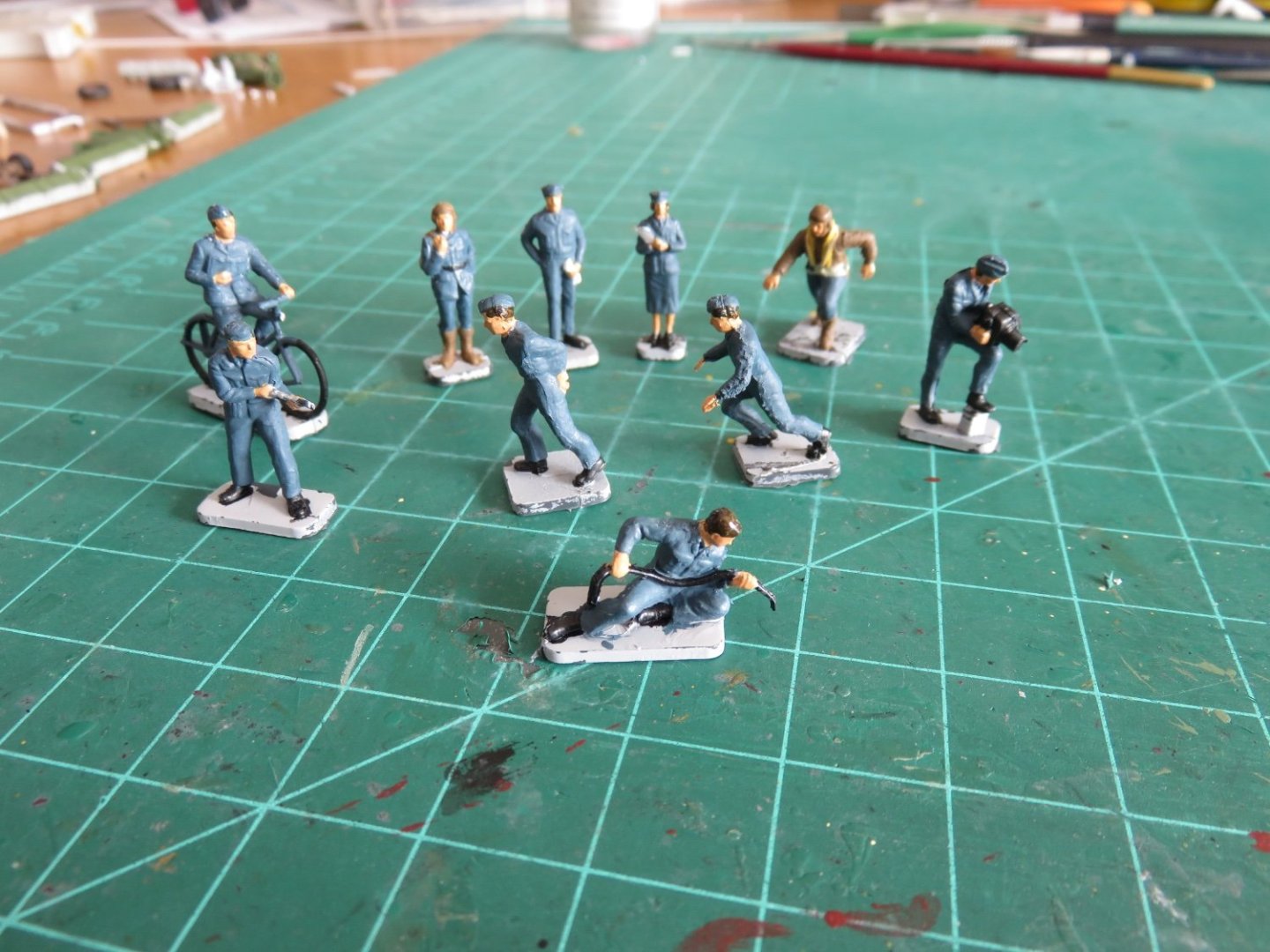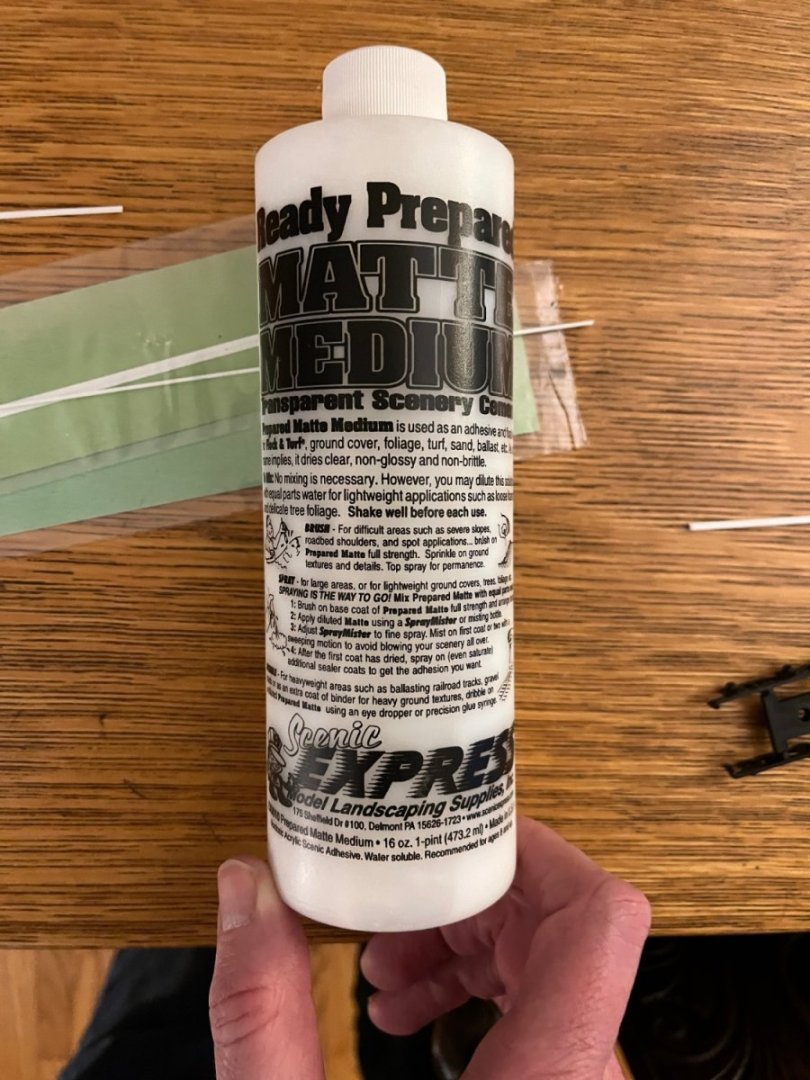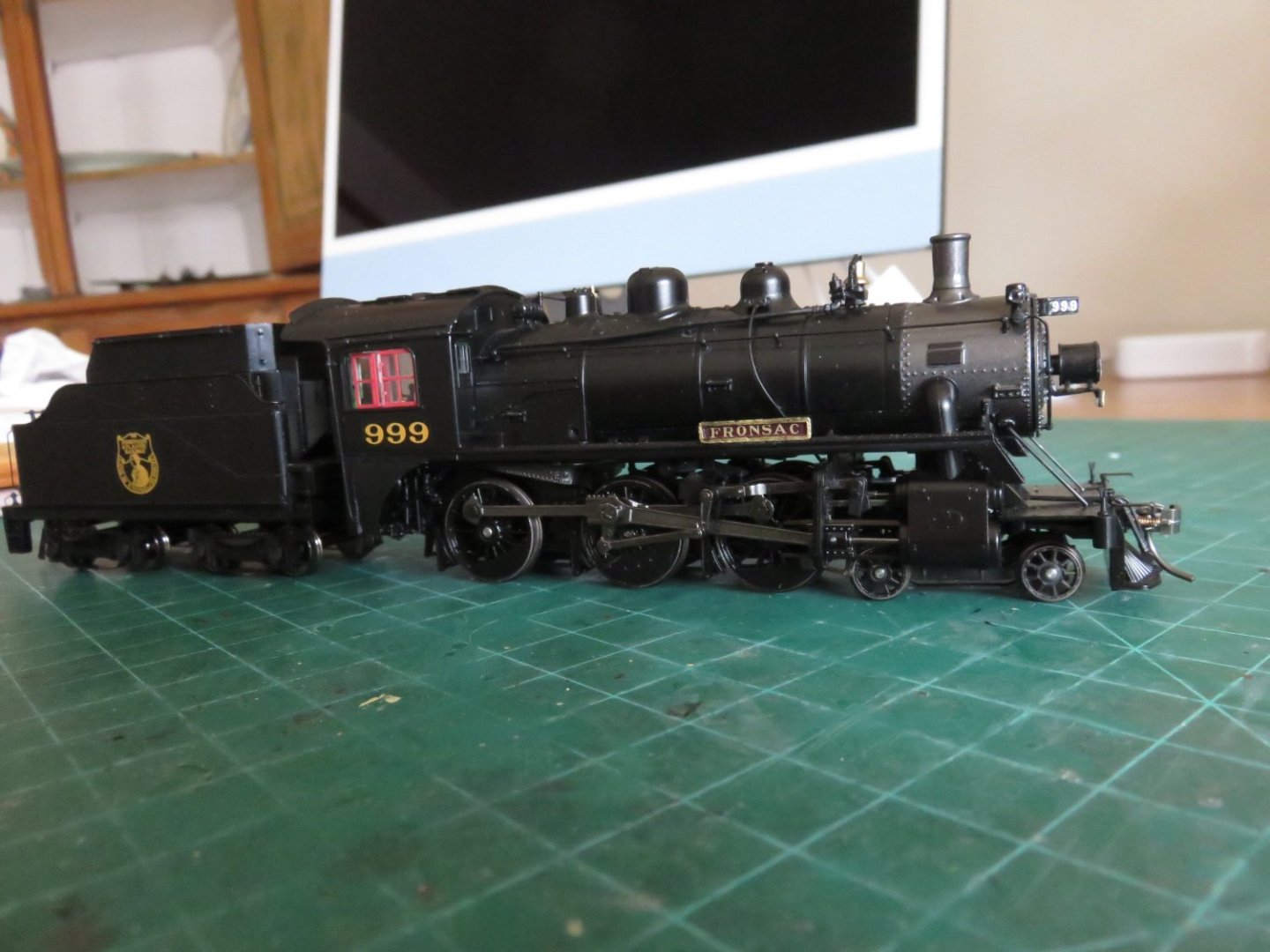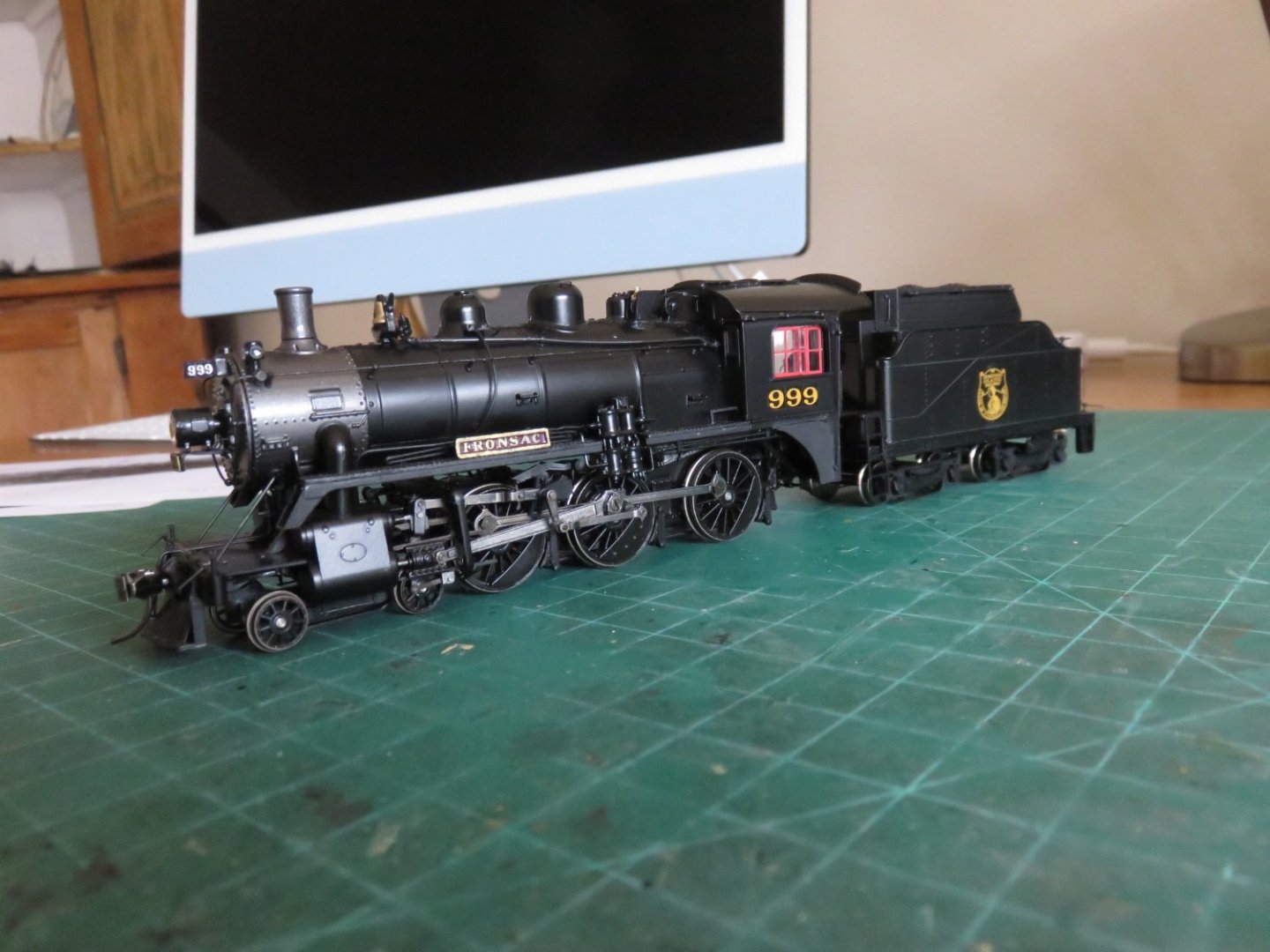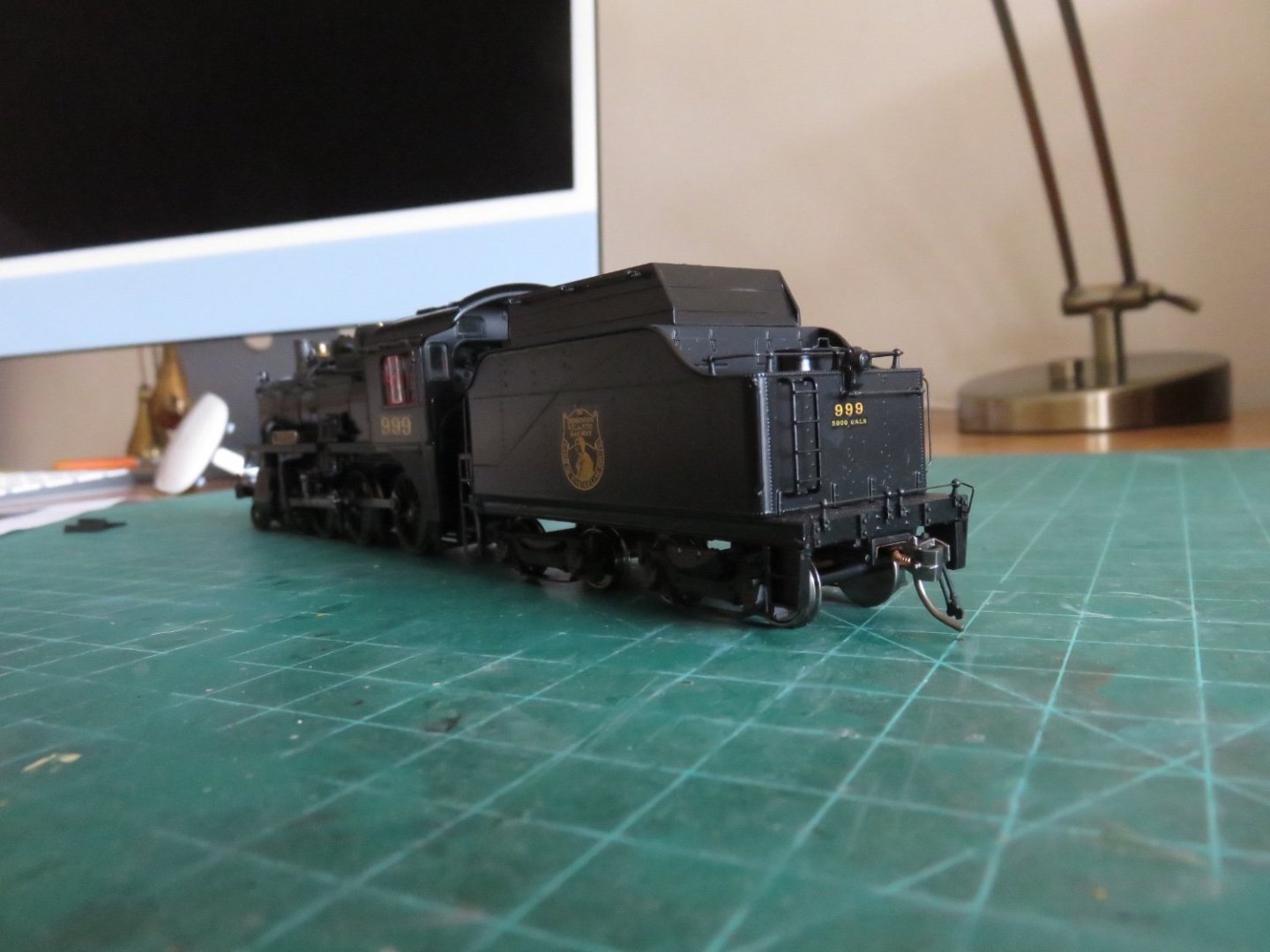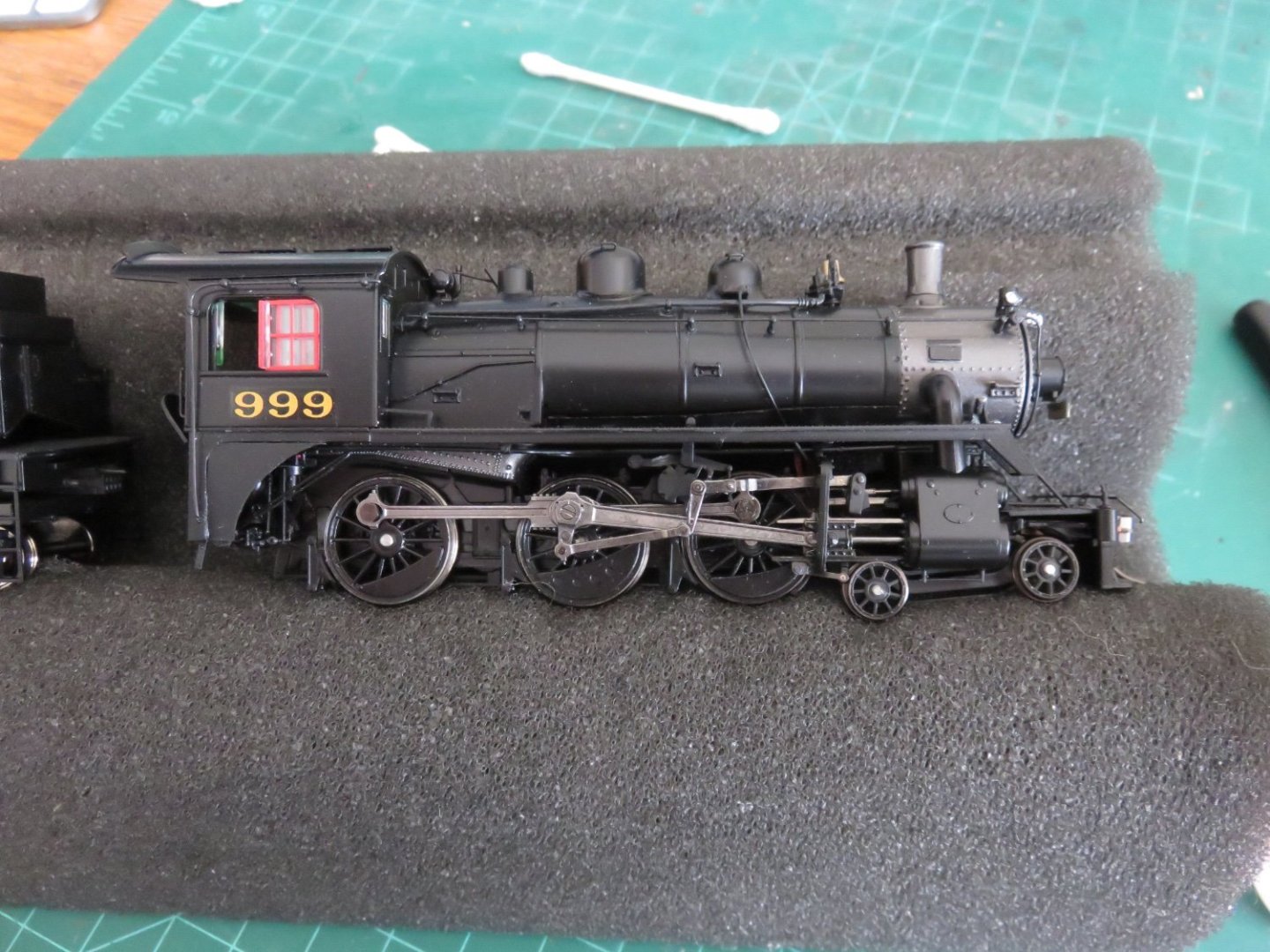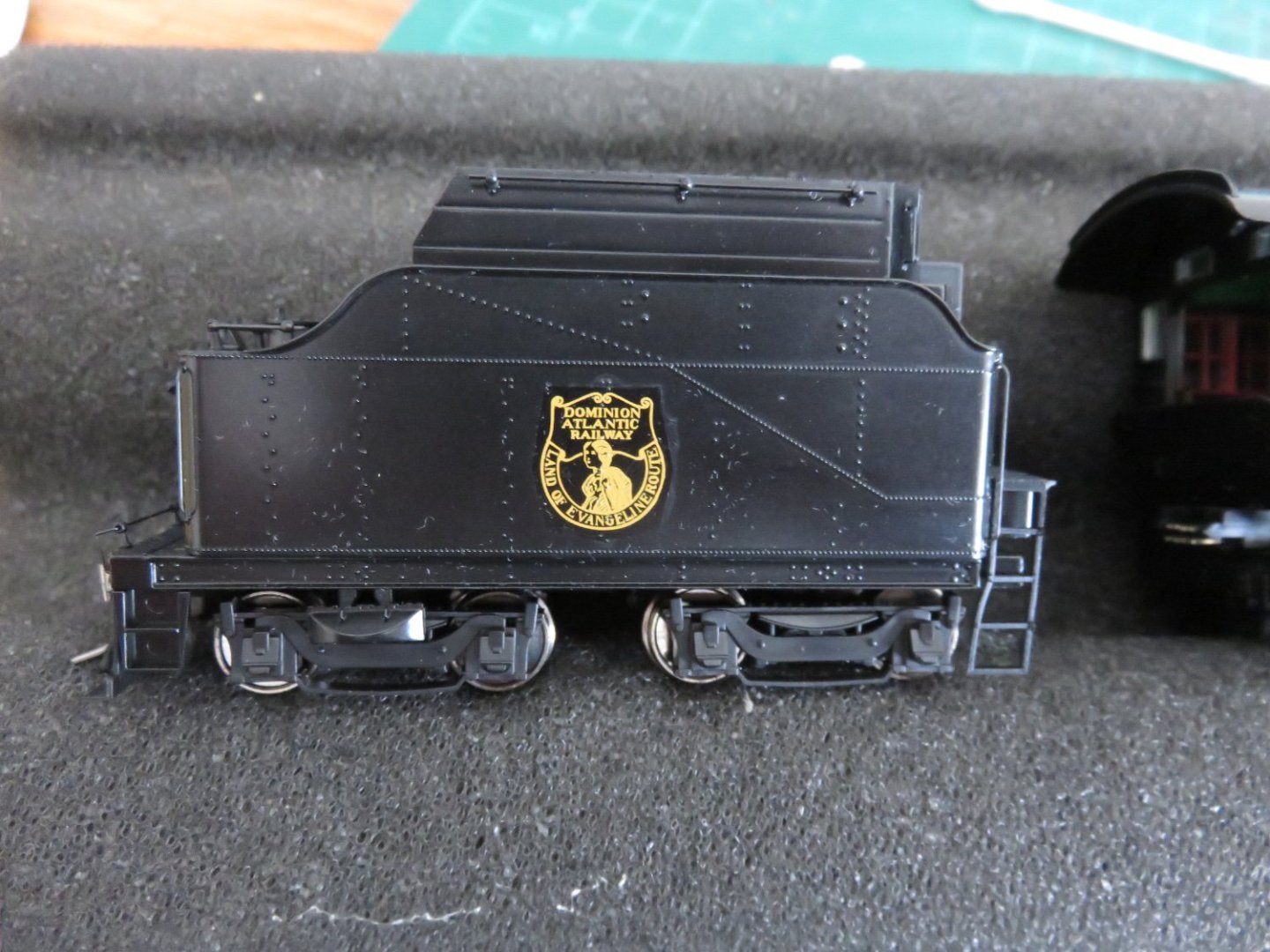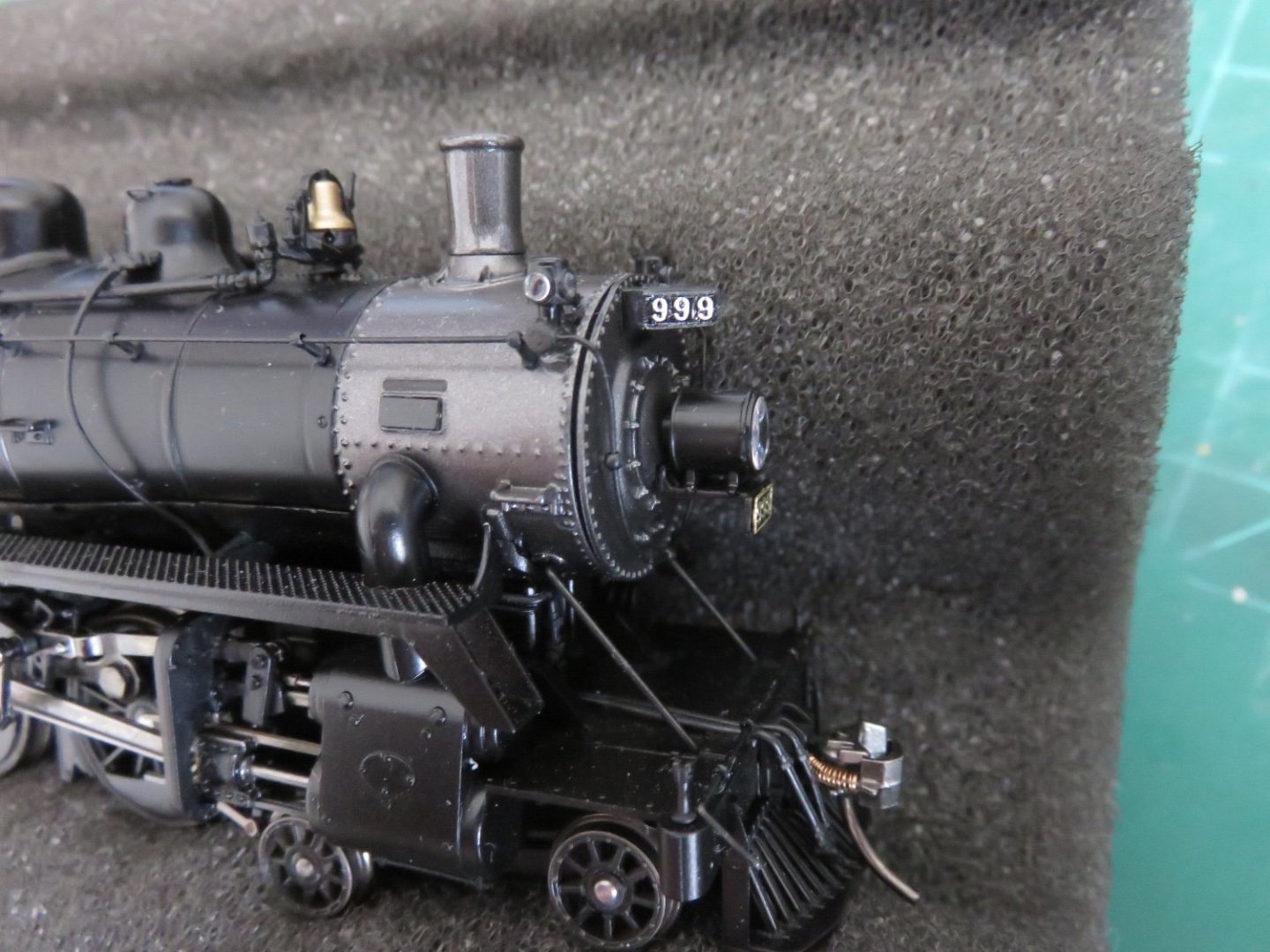-
Posts
3,248 -
Joined
-
Last visited
Content Type
Profiles
Forums
Gallery
Events
Everything posted by realworkingsailor
-
I’ve noticed over the last few days that my notifications are lagging. Alerts for responses to threads I follow don’t show up immediately after a new post has been added (as had been the norm). For example I am set to follow King Derelict’s Loarre Castle build and a post was made 26 minutes ago. As you can see here, no notification alert is indicated, yet (?). The last notification being issued an hour ago. Anyone else having this problem? Any thing I can do on my end to fix it? Andy Edit at 9:17 the notification arrived saying the post was added “6 minutes ago”, which still means a considerable time lag.
-
Thanks for the comments and likes, everyone! 😀 @yvesvidal Almost every dio I've seen online has either a B-17 or a Lanc (or a bunch of Spits), Wellington dios are about as rare as hen's teeth! Work has begun on the scenery base. I first plotted out where I wanted my terrain features to go with a sharpie on the foam board. I did this with the models in place to ensure the features would fit alongside them: Apologies for the soft focus on this first picture. In order to differentiate certain aspects, I decided to create a slightly raised "runway" area in the bottom left. Any pictures I've seen of Wellington bases all seemed to have grass runways, so by adding some subtle elevation it would help to differentiate this from the rest of the base. I also wanted to include the effects of less than ideal weather by having a good sized mud puddle. All these other dios seem to depict operations as they would have appeared on a sunny early summer morning. I want to show the effects of a recent run of wet weather. I will also mix in some areas of static grass to detect some less travelled areas, where the grass hasn't been compacted by the comings and goings of heavy airplanes and other vehicles. To add some depth to the terrain, I "excavated" the muddy areas with a rasp. A nice feature of working with foam is the ability to create below grade features. A good tip is to excavate these features a little deeper than you anticipate needing! My personal preference for a base material is DAP DryDex spackling compound. It comes ready to use and spreads reasonably well with a putty knife. It handles Woodland Scenics scenery paint just as well as any other type of plaster, and any other products typically used for scenery, and it is less messy to apply and has a decent working time and once dry, it sands well. I should mention too, it's about half the price of WS hydrocal plaster! The first area I applied the DryDex is the "raised" area. This will take a couple of thin layers as thick coats will be prone to cracking! As you can see the compound goes on pink, but it will turn white as it dries (you can see this transition just starting along the upper edge). The sub scenery should take me most of the weekend, a lot of time will be spent waiting for the DAP to dry. Not much of an update, seems like an awful lot of words to say "Hey look, I made a pink triangle!" 🤪 Andy
-
Nice! Glad you can find them! Yeah, the Canadians had a very rough go in Normandy. While the Americans and British garner the lion’s share of attention from most historians, the Canadians have been largely forgotten. And, yeah, the fighting was brutal. The Canadians suffered a higher casualty rate than either the British or the Americans (while the Americans did suffer a higher absolute number of casualties, in terms of casualties as a percentage of the attacking force, the Canadians had it much worse). The text in the books is well supported by fairly detailed maps. I have the paperback editions and I had to keep a separate bookmark for the maps section as I kept flipping back and forth to follow along with the narrative. Andy
-
Not sure if you’ve ever delved into a regimental war diary before, but they contain a lot of information. My great-uncle was in the 2nd Medium Regiment, RCA. I went through their war diary last fall (over 8000 pages of records). An incredible amount of raw data, but I found it very much lacking in context. To paraphrase a sample entry: “Morning, guns deployed at position XYZ, zero lines established. Early afternoon, fired X rounds HE at target ###. Late afternoon X battery shelled by enemy, one OR sustained minor injuries” All great information…but what exactly just happened?? In my case I’ve been reading a series of books about the Canadian actions in the Italian campaign (where my great-uncle was deployed), finally I’ve been able to establish the “why” and the “what”, the context that was sorely lacking. If you’re interested, and if you can get them, there’s a series of books by Mark Zuehlke that details the Canadian army campaign(s) in Europe. Three of them (Juno Beach, Holding Juno, Breakout From Juno), would cover the period you’re looking at. They’re quite detailed, but a reasonably easy to follow narrative (and, critically, no editorializing, save maybe a reflexive epilogue). Andy
-
From what I’ve been able to dig up, the 2nd Anti-Tank Regiment, Royal Canadian Artillery, was equipped with Archers from Normandy through to the end of the war. If you scroll down through here: https://www.silverhawkauthor.com/post/royal-canadian-artillery-rca-first-canadian-army-north-west-europe-1944-1945 there are a few photos of the 2nd in action with their Archers in the Rhineland in early ‘45. The regiment’s war diary is available online: https://recherche-collection-search.bac-lac.gc.ca/eng/home/record?app=fonandcol&IdNumber=926793 They had an interesting day outside of Caen in July 1944: https://www.wartimes.ca/forums/viewtopic.php?t=1401 Hope that helps! Andy
-
Really looking great! Your experience with the WS coarse turf is typical, not much you could have done differently, larger scale or otherwise. Not sure why they insist on selling it in shaker bottles, I guess it stores better on a shelf! You’re working at a scale where it best represents scrubby bushes, so placing down one small clump at a time is very effective. Model scenery is, at best, an illusion meant to fool the eye when viewed from a typical distance. Keep up the great work! Andy
-
What you may wish to consider, is before adding your top fixative, spray a mist of water mixed with isopropyl alcohol to wet the surface of the WS ground foam. This will help the glue (or acrylic medium) to wick into the foam. Otherwise you run the risk of having the ground foam forming a hard shell, top and bottom, with an unglued middle. Long term this will be prone to cracking. Wetting the ground foam also has the added benefits of keeping it in place when you drizzle on the top coat of glue, as well as helping the glue cover a greater surface area (meaning you’ll need less glue). Otherwise, it’s looking very good! Andy
-
One thing is for certain, when you have momentum, things can happen quickly! I stopped by my local hardware store this morning and picked up a piece of foam insulation board. It's not pink, or white, or green, but a neutral grey colour.... anyway, it's the good high density foam board perfect for my needs. It's a 2" thick board so it is more than rigid enough for my purposes. Of course, I couldn't wait to cut off a chunk of that 2' x 8' board and try out some ideas on how I want to see everything arranged. I started off with a piece 18" x 24", which worked out to be about the same size as my cutting mat. I am a big fan of empty space in a scene. I think a subject needs space to breathe in its surroundings, and the more things that are "happening" in a scene, the more space it should have. Rest assured the "empty" space won't be entirely empty, nor will the ground be a generic green carpet of "grass". I will endeavour to make the landscape look suitably trodden and driven over, maybe even a mud puddle or two (England is stereotypically known for being a damp country, accurate or not). To bring the viewers attention to the exposed engine, I figured this "maintenance" scene would be enough to draw people in. While on the other wing, refuelling is underway. Out in front a bomb train with the night's payload is getting into position while some other airfield traffic is passing by on the verge of the grass runway/taxiway. Realistically, if you follow the film I previously posted, the incendiary bombs would travel, and be loaded separately from the conventional bombs, but I've only enough parts for one bomb train. The figures will loose their bases when it comes time to place them about the finished scene, so they will shrink by about a scale foot. Time to make a shopping list for the scenery items! Andy
-
Oh yes, not to worry! 😁 Any of the pellet-y stuff (white or whatever colour) is only good for coffee cups. I’ve been around the pink board in a model railway situation and it seemed to work well enough (but yeah, it didn’t take impacts very well). A layer of hydrocal plaster on top can hide a lot of incidental divots. Andy
-
So I've been kicking around this diorama idea since I started working on my Vickers Wellington bomber. Although I haven't yet begun construction of the diorama, I've been busy messing around building the little detail bits that will add to my fictional scene. Airfix provides a couple of useful kits for this purpose. The largest being their WW2 RAF Bomber Resupply kit, which I picked up back in November last year. This kit includes a variety of appropriate vehicles and other paraphernalia that would have been right found on many airfields. I have been slowly picking away at building these elements over the last little while. I don't have any in-progress shots as I found this kit a bit of an annoying one to build. I can't quite put my finger on why I feel that way about this particular kit, but there it is. It's not like it was particularly challenging to build, it is somewhat repetitive (hand painting the tyres on 32 different wheels), maybe that's why it begin to feel like more of a grind.... but I am happy with the results. Over a year ago, I also bought a set of RAF figures, also from Airfix). I will be using these to populate my scene as well as a couple of the vehicles. They are marked as being 1/76 scale, but they don't seem to be out of proportion for the 1/72 vehicles. I had some fun before Christmas painting this gang of miscreants. Not sure how many I'm actually going to use, but I feel I have a nice selection to choose from. For whatever reason, they were moulded in a soft acetyl plastic. It was a bit of a pain to remove the flash, and although the paint seems to have adhered, it won't stand up to too much abuse. The first vehicle in the bomber resupply set is a Bedford MW: The kit comes with provisions to build the Bedford as either the MWD cargo version or the MWC water carrier (some people think it is a fuel truck, but it is not). I elected to build the cargo version, as the water truck was for refilling the radiators of liquid cooled engines (Merlins, or Napier-Sabers). Since my bomber has a nice set of air-cooled Bristol Pegasus radials, the water truck was pointless. The next vehicle in the kit is a 12Hp Austin Utility (Tilly): Another pretty straight forward vehicle. I performed some surgery on one of the Airfix figures, so I could show the Tilly being "driven". My Tilly doesn't exactly follow the Airfix prescribed paint scheme, but I think it still looks good. Following the Tilly is a tractor/tug: The kit tractor is a David Brown VIG1, but I made some non-prototypical modifications. I thought the front fenders on the VIG1 looked kinda hokey, so I cut them off to make my tractor look more tractor-ish with the open front wheels. The kit also supplies parts for a recovery winch and anchor spades, but I left those parts off as my tractor will only be hauling bomb trolleys. I suppose I could have hunted around for a 1/72 Fordson. But I'm going with my version. As the tractor was an open vehicle, a figure also had to be surgically modified to fit. He kind of looks like he's driving, although he's a bit casual looking, leaning back staring up at the sky. Speaking of bomb trolleys, the kit provides 3: There are two Type "C" trolleys. I built these as per the instructions. Nothing too fancy. The remaining kit supplied trolley is a Type "D". This trolley was designed to carry the HC 4000lb and 8000lb bombs, both of which are too big (and too late) for my Wellington (the later Wellington Mk III and Mk X could carry the 4000lb "Cookie", but that required changes to the internal framing of the bomb bay). In most photos I've seen of Wellingtons being re-armed in the earlier part of the war, the bombs were hauled on a Type "B" trolley. This consisted of a suspended centre beam with the bomb cradles sticking out like ribs. To be able to show a more complete load out for my Wellington, I decided to try my luck at scratch building one of these types of trolleys: I found a few useful photos on the internet to help get the basic structure. I did keep a couple of parts from the Type "D" trolley, the front and rear axles, the wheels and the draw bar, the rest was styrene strip and a little bit of brass wire. There is a fair selection of other bombs included in the set I have yet to add the decals to these yet. The grey boxes are Small Bomb Containers, these contained the incendiary (thermite) bombs used by the RAF. Getting back to the maintenance side of things, the last large "vehicle" is a 450 gallon Brockhouse bowser: For reasons I can't fathom, Airfix supplied decals for this as a lube oil bowser (boring). I would have much rather seen this as a fuel bowser instead. These were typically marked with "100 Octane" in large white letters on each side (rather than "OIL" stencilled on one end). As I wanted a fuel bowser, I left the "OIL" stencil off, but snagged the roundels from the Bedford water carrier that I didn't need. The final item build is this rather spindly maintenance tower: It will fit nicely beside the engine that I left open to view on my Wellington. For the rest, there is an assortment of other items like oil drums, fuel canisters, tool boxes, chocks, that will be added later when things get going. I will revisit this log when I finally get underway with building my diorama. I need to purchase some scenery materials as well as a base. I am planning to build on a slab of 2" thick insulation foam. This is common in the model railroad community, as it provides a lightweight, stable substrate. Andy
-
It’s worth pointing out that polyurethane resin is not UV stable. Over a relatively short period of time, when exposed to UV light, “white” resin will yellow drastically (to a rather familiar pale yellow colour), and become very brittle. I’m not sure what colour would result from unpainted grey or black resin, but it won’t be good. Painting resin will eliminate any UV induced colour change, as well as helping to reduce any brittleness. Andy
-
I agree with you, I’m under no illusions In O scale you’re pretty much limited to making the rotary spin, but that’s about all (maybe some sound effects). You’d never get enough weight in it to keep it on the tracks let alone be able to add a motor and batteries etc. (even the G scale rotary derailed at the end of the above video). Andy
-
Happy New Year Kevin! You’re doing a great job, but it’s a shame Occre made the kit wheels with those oversized “pizza-cutter” flanges. For a display model they could have been made a bit more prototypical. Regardless, your efforts will result in a great model. Is there any track included in the kit for display? Andy
-
Thanks for all the well wishes and "likes"! I hope everyone had a great Christmas. I was the unlucky recipient of the Christmas Cold this year. Started feeling a little off on Christmas morning, and things didn't get any better as the day wore on. So while all you lucky folks were unwrapping your new model kits and fancy tools, I was downing copious amounts of cold medicine and getting really friendly with a rapidly depleting box of Kleenex. Fortunately things passed relatively quickly and I'm feeling much better now, the residual inflammation and general stuffiness are subsiding as each day passes. Through it all, I have managed to get the lettering done a little ahead of my anticipated schedule. I even had time to add a little bonus detail too. The Dominion Atlantic was one of the few railways to maintain a roster of named locomotives well into the 20th century. The names were drawn from important figures in Nova Scotia's history (the DAR originated as a regional line in Nova Scotia, running through the picturesque Annapolis Valley, before it was bought by the CPR in 1912) as well as from Longfellow's Poem. The nameplates were cast brass and mounted above the running boards. According to DAR records #999 was assigned the name "Fronsac", and although there is no photographic record of the locomotive ever having been actually equipped with the name board, I couldn't resist. "Fronsac" refers to Nicholas Denys, Sieur de Fronsac a merchant in Acadia in 1632. During the Second World War, most if not all DAR locomotives lost their brass nameplates, for obvious reasons. Ultimately, I would have really liked to have the nameplate made from PE, alas there are no commercial suppliers for such a specialized detail part, so I had to make my own. I kept it as simple as I could. The plate consists of a strip of 0.125" styrene with a raised surround of 0.020" square styrene strip. I sanded the raised strip down to about 1/2 thickness. The name lettering is from a CPR passenger car "gold leaf" lettering set (the variety of car names gave a wide selection of letters to choose from). I initially wanted to add some "gold leaf" pin striping to the surround, but this proved a little too fiddly to get to look right, so I settled for brass coloured paint. The recessed area of the nameplate was painted in CPR tuscan red, but I left the back side flat black. As you can see in the above photo, the front number boards have been completed as well. The final little bit of lettering was the locomotive number on the rear of the tender, along with the water capacity. The model also came equipped with footboards on the rear of the tender. This feature is appropriate for locomotives assigned to switching duties, but were not found on locomotives serving in road duties. A few quick slices with my X-acto knife saw the end of these unneeded features. This pretty much brings this little project to its conclusion. I'm overall happy with my results, and I have to commend Rapido Trains for continuing to offer un-numbered/un-lettered versions of their products, it certainly makes my life easier! Thanks again to everyone who's followed along, or just stopped by out of curiosity, I hope to see you all for my next project... whatever that may be! Andy
-
I suppose before things get even more busier with the holiday season crazies, I should, at the very least provide a bit of an update on the status of things as they now stand. I have been slowly picking away at the lettering, in the grand scheme of things, there really isn't a lot to be applied, but it's not without its challenges. With any model locomotive, the number is always the part of the lettering that requires the most care. Decal companies usually provide a range of numbers in their lettering sets, but unless you're lucky, the numbers are not found in the order you need them. Black Cat Publishing is no different. Having said that, their Dominon Atlantic steam loco set does include a number set for #999, but the spacing is incorrect, which means I still had to cut out each number individually for application to the locomotive cab side: The standard CPR painting scheme required the locomotive number, when applied to the cab, to be applied in the centre of cab panel (between the front corner and the vertical handrail) located below the window. For a loco with a three digit number, this meant starting with the middle digit, and moving outwards. As I didn't want things shifting, this meant applying one number at a time and waiting for things to set fully before proceeding to the next number, until all were applied. The Rapido model includes many lighting features, including a lit front number board (prototypically accurate). For the undecorated model, this is left as a white panel. I had to do some serious digging in my stash of decals to find some appropriately sized white numbers printed on a black background. (I had hoped for clear numbers, but this is the next best thing). It's easier to find white numbers on a clear background, as most earlier steam locomotive models (read: brass models) do not include lit number boards, so the numbers would be applied over an inert black painted background. One of the things that really piqued my interest in the Dominion Atlantic was the quaint, unique, tender herald applied to many of its steam locomotives. The herald celebrates Henry Wadsworth Longfellow's epic poem. There are still a few more decals to be applied, but that may have to wait until after Christmas. Thanks to everyone for the "likes" and comments, and my gratitude to those who followed and are following along with this and my other builds this past year. Your support and kind remarks have been a source of endless encouragement and I can't thank you all enough. I wish you all the best through this coming holiday season (however you celebrate). Andy
-
There’s a great story about a group of Canadian soldiers from the Royal Regiment of Canada, in the summer of ‘44, taking some rest in the shade of a Normandy orchard. One of the soldiers, as he was stretching out under a tree, accidentally kicked something with his heel. Upon investigation, it turned out to be the slightly protruding neck of a buried bottle. Further investigation/excavation unearthed, much to the soldier’s delight, that it was a full bottle of Calvados. Word quickly spread of the discovery, and in short order the Canadians had unearthed an enormous stash of buried bottles throughout the orchard. Of course hot weather, and thirsty soldiers saw short work of the alcoholic windfall. The poor farmer was heard to lament that for over four years he had managed to safely hide his entire stash from the occupying Germans, but in a little less that half an hour the Canadians came through and cleaned him out! Andy
-
CPR D-10 Before going further with this log, I thought it wise to present a brief history and description of the D-10 class of steam locomotives. The most numerous single class of steam locomotive in Canada, 502 examples of the type were built, that first rolled out in 1905. To really study steam locomotives, is to also delve into the history of the men who occupied the role of mechanical chief engineer (or whatever particular title the railway bestowed upon the head of locomotive design and development). It’s worth taking a brief step backwards to the beginning of the 20th century to briefly look at the dawn of the superheated steam locomotive. Superheating is the process whereby saturated steam is passed through a heat source in order to raise its temperature above that at which the water from whence it came had boiled. This process induces more potential energy into the steam, thus allowing the steam to perform more work for a minimal expenditure of extra fuel. Prior to the development of the superheater, locomotives were either simple saturated steam engines (steam used once in each cylinder before being exhausted), or compounded (stream was used first in a high pressure cylinder, passed into a larger lower pressure cylinder, and then exhausted). Steam formed at the boiling point is known as saturated steam. In 1898 the first practical application of a superheater was developed by Wilhelm Schmidt, in Germany. The fuel efficiency increased by approximately 25% in locomotives fitted with Schmidt’s superheater, over their non-superheated equivalent, and also dramatically increased their available power. Later experiments on the CPR showed a fuel efficiency of 11% in favour of superheated equipped engines, over compound locomotives, without, it should be noted, the added mechanical complexity, and cost, required by the compounding system. These developments were watched very closely by mechanical engineers around the world, but in particular by the mechanical department of the Canadian Pacific Railway. The CPR dispatched one of its mechanical engineers, A.W. Horsey to monitor Schmidt’s progress and learn as much as he could. Often Canadian railway companies are overlooked, and in many cases have been considered to be un-innovative, quaint, or otherwise unimportant in their contribution to steam locomotive design and development (we never had the large fleets of gigantic articulated locomotives that roamed the US, and most Canadian designs of established types tended to be smaller than their American counterparts). Counter to this perception, the CPR rolled out the first superheated steam locomotive in North America in the summer of 1901 and by 1906 acquired 197 superheated locomotives (at the time there was fewer than 20 other superheated locomotives in the entirety of the remainder of North American railroading). Most of these early locomotives were conversions of existing types, and allowed the CPR to perform side by side comparisons. Subsequently as many locomotives became due for servicing/rebuilding, a superheater was included in the programme. In February 1904, the CPR appointed a man who was to become one of its most dominant figures in steam locomotive history, Henry Hague Vaughan. He was to be responsible for more new locomotive types than any other mechanical chief employed by the CPR, as well as building fully 45% of the total number of new steam locomotives ever owned by the railway (nearly 1500 locomotives). He was also behind a fleet wide locomotive reclassification and renumbering, a system, it should be noted, is still in effect to this day! Vaughan was single handedly responsible for introducing the 4-6-2, 2-8-2, 4-8-2, and 0-10-0 types to the CPR as well as Canada’s only mainline articulated locomotives, a half-dozen 0-6-6-0 locomotives destined for service in the mountains. Incidentally, the last of these shares with the Pennsylvania railroad the honour of being the first simple articulated locomotives ever put in service. Under Vaughan, the CPR produced its first full class of superheated locomotives built new in late 1904, a group of 40 2-8-0s. This was followed up in 1905 with the first ten D10 4-6-0s. The D10, although a new design, was based on the earlier D9 (originally class S.T.11), designed by Vaughan’s predecessor Edward Williams. While dimensionally similar, the D10s came from the erecting halls fully equipped with superheaters. The first four subclasses of D10 (a through d) were delivered with Stephenson’s valve gear, the latter subclasses e through k were equipped with Walschaert’s valve gear. The D10 class proved to be one of the most versatile 4-6-0 type locomotives ever built. They would be found in every type of operating service to be found on the CPR. Equally at home working freight or passenger trains, yard or helper service, D10s were found in every corner of the CPR system. It could be said that no other locomotive fulfilled its role as thoroughly as the D10 until the arrival of the first diesel road switchers. It’s also worth noting that in 1912, the Algoma Central Railway ordered five 4-6-0s that were, for all intents and purposes, exact copies of the CPR D10 (imitation and flattery and all that). D10s were built by all the major builders in Canada, with orders being produced by Montreal Locomotive Works, the Canadian Locomotive Company in Kingston, ON, and by CPR’s own Angus shops. Orders were also built by Alco’s Schenectady works in the US. Rapido Trains model D10 represents some of the later classes of the type (g, h, k). Built between 1910 and 1913, these D10s featured 21”x28” cylinders and 63” drive wheels. The locomotives had a length over the couplers of 63’ 3”. These locomotives also introduced some visual features that would become hallmarks of CPR stream power; straight valanced running boards (although at this stage more of an extended flange), smaller cab windows compared to their predecessors. Originally equipped with a single stage air pump and a manual reverse lever, many would be upgraded with cross compound (two stage) air pumps and power reversers. The D10 carried a 200psi boiler pressure and had a firebox grate area of 49 sq ft. They were hand bombers throughout their careers (no mechanical stokers) and they could exert a tractive effort of a little over 33,000 lbs. The Vaughan era at the CPR has been referred to as the “Periclean Age” of CPR steam power. His innovations and adaptations of contemporary trends firmly launched the CPR motive power into the 20th century. Had Vaughan not left the CPR in 1915 (due to a disagreement in priorities), there is little doubt that the CPR would have been firmly in the forefront of steam locomotive development in the 1920s, era that saw the development of “Super Power” steam locomotives. Bibliography Lavallee, Omer, “Canadian Pacific Steam Locomotives”, Railfare Enterprises Ltd, 1985 Bain, Donald and Leslie, Jack, “Canadian Pacfic’s Mighty No. 8000”, British Railway Modellers of North America, 2004
-
Thanks for the “likes” everyone! @Canute Rapido have really set the bar high, I remember some of their earliest offerings, while extremely detailed, they suffered from a host of issues. This was in the early oughts (‘03 or ‘04). It really took them the better part of the decade to hit their stride, but leaving their early teething troubles behind, they’ve carved out a sizeable piece of the the market with an almost uninterrupted stream of fantastic models. I’m kinda thankful they’re full swing into developing products for the US market (as well as their core Canadian market), as it has taken a lot of heat off of my wallet trying to keep up! Andy
About us
Modelshipworld - Advancing Ship Modeling through Research
SSL Secured
Your security is important for us so this Website is SSL-Secured
NRG Mailing Address
Nautical Research Guild
237 South Lincoln Street
Westmont IL, 60559-1917
Model Ship World ® and the MSW logo are Registered Trademarks, and belong to the Nautical Research Guild (United States Patent and Trademark Office: No. 6,929,264 & No. 6,929,274, registered Dec. 20, 2022)
Helpful Links
About the NRG
If you enjoy building ship models that are historically accurate as well as beautiful, then The Nautical Research Guild (NRG) is just right for you.
The Guild is a non-profit educational organization whose mission is to “Advance Ship Modeling Through Research”. We provide support to our members in their efforts to raise the quality of their model ships.
The Nautical Research Guild has published our world-renowned quarterly magazine, The Nautical Research Journal, since 1955. The pages of the Journal are full of articles by accomplished ship modelers who show you how they create those exquisite details on their models, and by maritime historians who show you the correct details to build. The Journal is available in both print and digital editions. Go to the NRG web site (www.thenrg.org) to download a complimentary digital copy of the Journal. The NRG also publishes plan sets, books and compilations of back issues of the Journal and the former Ships in Scale and Model Ship Builder magazines.

